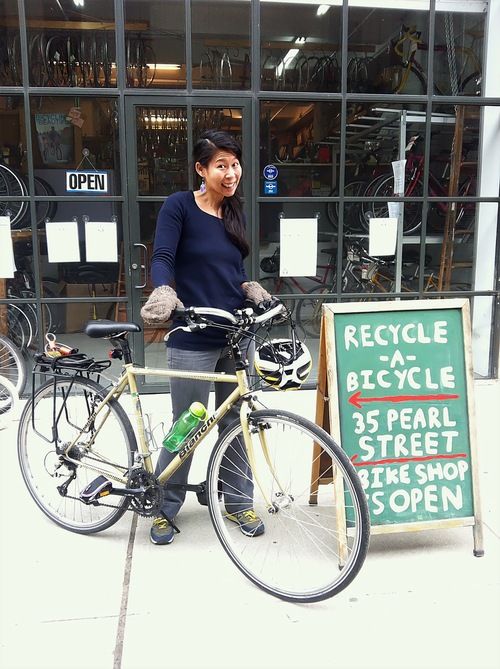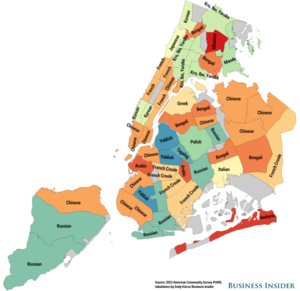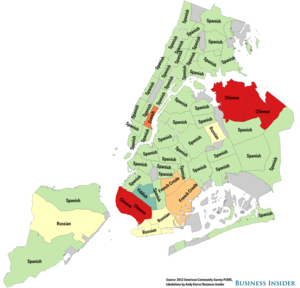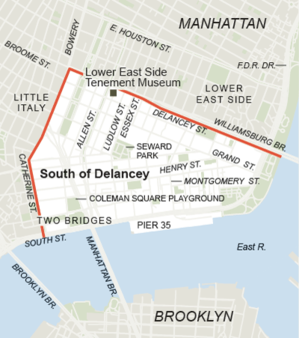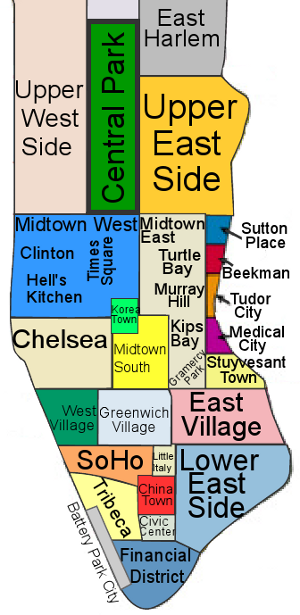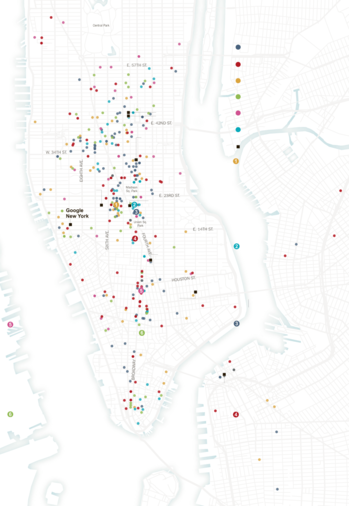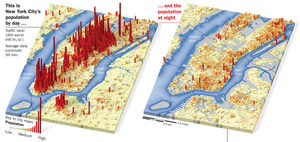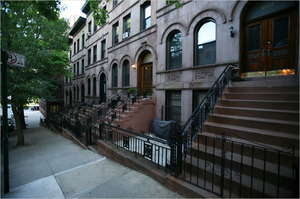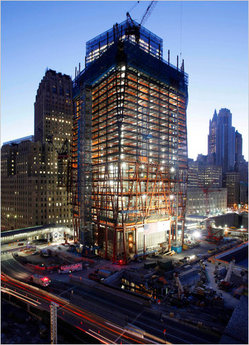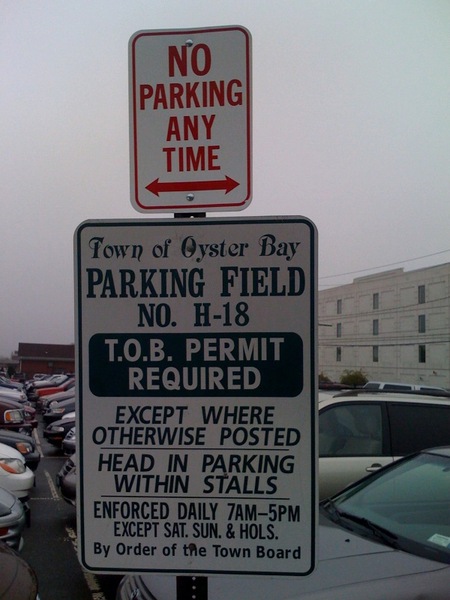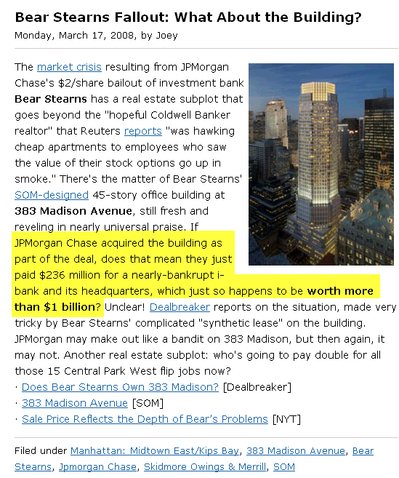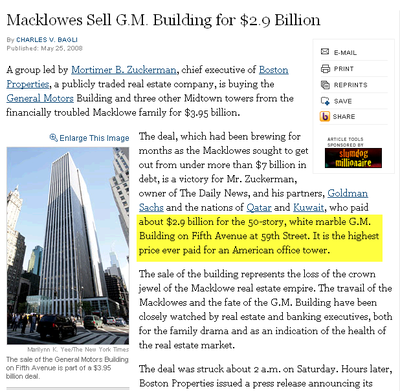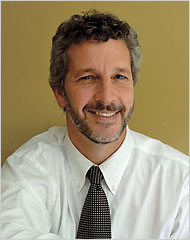April 27, 2020
April 12, 2018
Sheds and scaffolding of NYC
The de Blasio administration released an interactive map Wednesday showing the location of every sidewalk shed--the reviled wooden structures built to protect pedestrians from construction work happening above (or not).
The sheds, which are often referred to as scaffolding, have drawn the ire of New Yorkers because many owners leave them up for years. In 2016, Crain's looked into the billion-dollar scaffolding industry and the state law that created it and found that there were 190 miles of sidewalk sheds in the city. Some had been standing for well over a decade.
As of Wednesday, there were 7,342 sheds covering 290 miles, a 42% increase since 2016.
January 18, 2018
Next-wave farmer Kimbal Musk
New-wave farmers: An urban farming accelerator in Brooklyn co-founded by Kimbal Musk (yes, Elon's brother) is hoping to expand with campuses in other cities, after graduating 10 entrepreneurs from its first nine-month training program on "vertical farming." (Fast Company)
October 30, 2017
Citibike angels program is pure arbitrage
Bike Angels forCitiBike NYC bike share.
October 20, 2017
CitiBike share bikeshare data
Rides, when, where. Citibike shares bikeshare data for NYC.
October 18, 2017
Rapha riders ride
Alliana Semjen, 25, a marketing manager at NBC, and her boyfriend Matthew Schwartz, 27, a lawyer, came to watch the race in matching cycling gear. Two to three times a week, they say their alarm wakes them at 4:30 a.m. so they can do a couple laps around Central Park before work.
As the riders went into the final stretch, a barista at Rapha placed a sign on the counter. It read, "5 km to go. No service. (Watch the race)".
September 22, 2017
George Washington Bridge suicide fence
"A temporary "pedestrian safety fence" intended to prevent suicides will be installed starting on Sept. 25 on the south side of the George Washington Bridge, announced Monday after a tour of the span by high ranking Port Authority officials.
Installation of the fence on the span's upper-level south sidewalk means it will be temporarily closed to pedestrians and bicyclists for three months, officials said. So far this year, agency "initiatives" have been credited with "intervening in 45 cases where emotionally disturbed people were considering doing themselves harm on the bridge," officials said"
August 26, 2017
LGA thinks of users
CEO of LaGuardia Gateway Partners Stewart Steeves ' 80-person staff works out of offices above Terminal B. "There's a lot of focus on infrastructure," said Steeves. "We're doing $100 million a month in construction, and we have a whole team of people and spend a lot of time on that, for sure. But it's also the little things."
That includes restrooms, which are the biggest determinant of passenger satisfaction, he said. "Are the stalls large enough so you can wheel in your suitcase and still close the door? How do you manage the sink and such so you don't get a big splash zone--or do you even need a counter when no one puts anything down on it anyway because its soaking wet? How do you design it so it can be cleaned more easily? Mirrors, more hooks, paper towels versus blow dryers..." reeled off Steeves. "We spend a lot of time thinking about stuff like that."
Citibike mapping trips
Every Citibike trip mapped, in N
YC.
August 6, 2017
Do biking commuters breath pollution ? A New York City story.
WNYC: Do biking commuters breath pollutionin NYC.
August 1, 2017
Olga Cook story, west side highway tragedy
The husband of cyclist Olga Cook, who was killed by a drunk driver last June at the intersection of West and Chambers Streets, is suing the City of New York, the State of New York, the Hudson River Park Trust, and the Battery Park City Authority over her death.
Ms. Cook was run over at approximately 8:00 pm on the evening of June 11, 2016 when a white Ford truck, driven by a 26-year-old Samuel Silva, traveling southbound on West Street, made an abrupt right turn onto westbound Chambers Street, and struck Ms. Cook, who was riding north along the Hudson River Park Greenway.
Olga Cook,the 30-year-old newlywed and triathlete who was killed by a drunk driver while cycling in Battery Park City on June 11, 2016.
"There were 17 prior crashes at just this location, in the years preceding Olga's death," says attorney Daniel Flanzig, who is representing Ms. Cook's husband, Travis Maclean. "And five of those incidents also resulted in serious injuries. And there have been multiple deaths of cyclists at other locations in the Hudson River Park's bike path."
Continue reading "Olga Cook story, west side highway tragedy" »
July 27, 2017
New urban Bronx
The development is being carved out of a 16-acre forest called Chapel Farms, whose past owners include the founders of the Theosophical Society.
Fieldston, a neighborhood of majestic oaks and winding privately owned streets in the northwest Bronx, is prized for its quiet country-in-the-city atmosphere, as well as its early 20th-century architecture and proximity to prestigious public and private schools. In April 2006, Fieldston was designated a historic district by the Landmarks Preservation Commission.
Mr. Moerdler of Community Board 8 said that complaints from Fieldston residents about the development had diminished. He said the opposition had its origins in concerns about a "deforestation program" of the property, which resulted in water runoff from the construction sites after heavy rains.
When asked to explain the difference between the houses of Villanova Heights and so-called McMansions, Mr. Stern said: "This is not a house for the Sopranos. These houses have fine detailing; they are based on creative interpretation of traditional designs."
He said that Villanova Heights was the kind of development that New Urbanists "would like to see happen around the country, where you have a relatively small property and the houses have a strong relationship to street, with clearly identified front doors."
He added that although the houses have three-car garages, they are "tucked around" toward the back of the house, and partially hidden from street view.
July 12, 2017
Helen Ho of Recycle a Bicycle, NYC
Eleanor's NYC's profile of Helen Shirley Ho of recycle-a-bicycle, New York.
More.
February 11, 2017
Park-poor, low-income communities of color, forgotten in the shadows ?
As American downtowns repopulate and densify, green space is at more and more of a premium. Very few open lots that could be turned into parks remain around urban cores; often, land that becomes available holds remnants of the industrial past. That's why so many of these "adaptive reuse" projects--with sleek aesthetics that often highlight, rather than hide, the old highway/flood channel/railway--are getting built.
Meanwhile, city governments rarely have room in their budgets, or even imaginations, to redevelop those tracts on their own. It's largely up to private funders to bankroll these projects--and it's mostly private individuals who dream them up. From an investor standpoint, the High Line's stunning successes make these projects no-brainers to back: Green space draws new businesses and dwellings. There's big redevelopment money to be made. So they partner with city governments, hungry for a heftier tax base, to do it.
But these obsolete bits of infrastructure generally have people living near them, and often, they are park-poor, low-income communities of color, forgotten in the shadows of that very strip of concrete or steel. This is true for many of the 17 projects involved in the High Line Network. Planners and designers--who are usually white--may try to engage residents in dialogue; often, they fail.
February 5, 2017
New York City bike lanes, circa 2002
New York City bike lanes rated Rate a C for experienced cyclists, but a F for new people on bicycles -- Clarence Eckerson of BikeTV
January 31, 2017
New York City Has Been Zoned to Segregate
New York City Has Been Zoned to Segregate
A new book argues that poor communities of color are hurt by the city's zoning and housing policies.
Today, historical color lines are being redrawn through a concentration of wealth and the displacement of communities of color. In New York, that phenomenon may be spurred in part by the city's well-intentioned land-use policies. Various types of rezoning--upzoning and mixed-use zoning, for example--have inadvertently but disproportionately harmed poor neighborhoods. That's the central argument of Zoned Out!, a new book edited by Tom Angotti, an urban planning professor at the City University of New York, and housing advocate Sylvia Morse.
we talk about in the book is the watering down of the word "affordable." Affordable housing used to imply that it was housing for people who had less money, who needed help affording housing. Now, it basically means anything that meets the federal guidelines for rent not costing more than 30 percent of household income, and really there's a lot of room to obscure which groups you're serving through affordable housing. I think that's a very New York City-specific context. Of course, we still have the old school, low-density NIMBYism, which we talk about [in the book].
Continue reading "New York City Has Been Zoned to Segregate" »
January 14, 2017
Manhattan to Montreal bike path. Thanks Cuomo !
Build 350 New Miles of Trail to Create Largest State Multi-use Trail Network in the Nation
750-Mile Trail Network Will Connect Lake Erie to the Capital Region and the New York Harbor to Canada
Governor Andrew M. Cuomo today proposed completing the Hudson River Valley Greenway and Erie Canalway trails by 2020 to create the Empire State Trail, the largest state multi-use trail in the nation.
To achieve this, the state will develop 350 miles of new trail in three phases to create a 750-mile pathway for hiking and biking along scenic vistas and through charming, historic communities. The Empire State Trail will span much of the state, from the New York Harbor up through the Adirondack Mountains to the Canadian border - and from the shores of Lake Erie along the historic Erie Canal to the heart of the Capital Region.
January 11, 2017
Times up rides
Times-up organized some bike rides in NYC.
July 4, 2016
New nerd glasses ? Low Bridge fit by Warby Parker
Fit for everyone's eyes.
April 16, 2016
New York Values
Which ares are most culturally unfamiliar with median America ?
Based on Charles Murray's 2012 book, "Coming Apart: The State of White America, 1960-2010.
April 10, 2016
Mile End Delicatessen
Small spot drawing big crowds for smoked meat sandwiches & other
Montreal-style Jewish deli staples
Mile End was opened by a married couple, Noah Bernamoff (a Canadian) and Rae Cohen (a New Yorker), in Boerum Hill in early 2010, in a cramped former garage retrofitted with vintage Woolworth's stools and pharmacy lamps. It soon had crowds clamoring for the Quebec innovation of smoked meat that falls somewhere between pastrami and corned beef.
53 Bond St, New York, NY 10012
March 25, 2016
Suburban Jungle
"Neither of us really wanted to live in the suburbs," he said. They came across Suburban Jungle while attending a baby industry event last May and spent an hour and a half on the phone with a consultant who sent them town reports on Harrison and Rye in Westchester County and Darien and Greenwich in Fairfield County.
"They could tell us more than a broker is legally allowed to tell us," Mr. Allen said. "Because they were moms living there with their kids," he added, the strategists not only knew which areas were zoned for good public middle schools, "they knew which roads you don't want to live on because the traffic is heavy." He added, "It was like getting an insider's perspective."
After ruling out Westchester because of high taxes, they narrowed their search to Old Greenwich for its "proper Main Street," good schools and proximity to the water.
January 15, 2016
Represent poverty through recognisably Dickensian tropes -- the too-big hand-me-down boots, the thick socks, the bad teeth ?
It's almost redundant to call the republication of In Flagrante, Chris Killip's classic work of the 1970s and 1980s, a timely one. In the 1980s, Margaret Thatcher punished the north for rejecting her party by refusing them any means of humane transition into a post-industrial world. Killip's depiction of the effects of this policy on the coastal towns of the north-east was a metonym for a more wholesale dismantling and dereliction. The book affords us a way we might think about how our own poverty currently looks.
The new edition is shorn of the original text by John Berger and Sylvia Grant; their collaborative essay has not aged well, and did Killip's images no favours. No scene was not apparently charged with some larger allegorical responsibility, no figure not contemplating the bleak future or the human condition -- or worse, salvaging some small redemption from the ashes; even a patch of Brussels sprouts was obliged to shoulder the burden of human hope. But there's little redemption in these photographs, and therein lies their power. (The new edition also loses Killip's own introduction, where he describes his work as "a fiction about metaphor" -- a scrupulously unhelpful remark, as much of its time as Berger's essay. I have still no idea what he means. The work is not a fiction, nor is it concerned with metaphor, if either of these words are to be conventionally defined.)
Helen and Hula Hoop, Seacoal Beach, Lynemouth, Northumberland
January 5, 2016
Jane Chu Illustrations
chuillustrations.tumblr; at Society6, with Korean-influenced design esthetic.
November 10, 2015
White people yelp reviews
White people yelp reviews are a thing.
May 16, 2015
ClassPass leads to overbooking ?
Under the ClassPass rules, members can take no more than three classes a month at any single studio, but they can otherwise take an unlimited number of classes at the 450 participating studios in New York. The hope for the studios is that ClassPass members will become sufficiently devoted that they will want to attend more often and will become full-price paying customers.
But the new crowds ClassPass brings are sometimes alienating the regular clientele.
March 21, 2015
Mapping NYC's growth
Mapping how NYC's housing market spurs population change.
CHPC NY's making neighborhoods map.
March 20, 2015
Street score media mit Citymap NYC
Streetscore by media.mit.edu Citymap of NYC: how welcoming are those streets ?
January 22, 2015
Train to Planes, Cuomo to Laguardia LGA JFK NYC
September 21, 2014
Boutique hotels in NYC, better than brand name
Chic boutique hotels like MAve, Flatiron, Verite and Tribeca Blu
can be nice and efficient for day trippers and power shoppers.
August 26, 2014
Banking, cool
The Renaissance Kids typically have their pick of investment banks, and what makes them so attractive to Wall Street -- aside from their credentials, which look good on a pitch book -- is that they're interesting. They're not carbon-copy Alex P. Keatons. They read books, can wax eloquent on nonfinancial matters, and are good at male small-talk (which female Renaissance Kids also excel at). Executives look them over and imagine them schmoozing clients, passing the airport test, and eventually taking over for them at the top of the firm.
Goldman Sachs is especially desirous of Renaissance Kids, because it's always fancied itself the thinking man's investment bank. ("I think you also have to be a complete person. You have to be interesting," Lloyd Blankfein told the bank's interns last year.) But because Goldman wants them, everyone else does, too.
The problem, for Goldman and the rest of Wall Street, is that banks aren't pulling nearly the number of Renaissance Kids they once did. These firms are having no problems drawing applicants out of college, but what I've heard from senior Wall Street hiring managers is that they're not the right kind of applicants. They're second-stringers, as far as the banks are concerned. The students these firms want to attract -- badly -- are increasingly going to Google or Facebook instead of Goldman and J.P. Morgan. (Or, almost worse, going to Goldman and J.P. Morgan, working for a year or two, and then quitting to go to Google or Facebook.)
August 9, 2014
New York speaks
July 28, 2014
Walkers sugar
"Mommy makes mean art," was the judgment that the artist's daughter, Octavia, delivered 12 years ago, when she was 4, and that gets pretty close to the truth. Awarding Ms. Walker a $190,000 "genius" grant in 1997, the MacArthur Foundation noted that Ms. Walker's images explored the "vestiges of sexual, physical, and racial exploitation" handed down by slavery. She has portrayed sex of every conceivable kind between master and mistress and slave; her panoramic views of the antebellum south include scenes of defecation, amputation, emasculation and decapitation. Violent, yes, but Ms. Walker also sees an absurdist side to the gore in her work.
May 8, 2014
SFO much more tech-centric than NYC
San Francisco is much more of a company town. Go into any bar in San Francisco and you will hear people talking about their start-up, or a battle they recently had with a line of code. Stop by a coffee shop in some neighborhoods here and you will be surrounded by venture capitalists being pitched a new idea for a new app. All of these people rarely, if ever, interact with people outside the tech world.
Unfair? Sure, but we are talking about glossy magazine stereotypes here.
In New York, if you meet someone who works in tech you feel like you've met a long-lost relative. Bars, coffee shops and restaurants are a mishmash of people from vastly different industries.
The lack of diversity between social groups in San Francisco isn't going to change anytime soon, as the number of tech employees in the Bay Area is only going to continue to rise. Ted Egan, chief economist for San Francisco's Controller's Office, recently said that in the early-90s, tech workers made up less than 1 percent of city workers in San Francisco. In 2000, tech employees had risen to 3 percent of the workforce. By 2013, that number had passed 6 percent.
April 3, 2014
Scarlett Johansson, Under the Skin, Unstoppable
ANTHONY LANE's New Yorker's Scarlett Johansson, Unstoppable before and after Under the Skin.
Robert Downey Jr. drinks her in and says, "I want one"--the best line in any Marvel picture, telling us everything about Iron Man, the superhero so blasé that his only option is to buy, or build, enough toys to perk him up. Most of the characters are no better than playthings, anyway. But not her.
February 21, 2014
nyc.gov motorist alternate side parking
Wherein "Do not park here" is revealed to be "park on other side of street": nyc.gov/motorist/alternate-side-parking.
January 23, 2014
$375,000 a year in New York City? Bankrupt, not middle class.
How far does $375,000 a year go in New York City? Strip out estimated income taxes ($7,500 a month), domestic support ($10,517), insurance ($2,311), a mandatory contribution to his retirement plan ($5,900), and routine expenses for rent ($2,460 a month) transportation ($550) and food ($650) and Mr. Owens estimated that he was running a small monthly deficit of $52, according to his bankruptcy petition. He has gone back to court to get some relief from his divorce settlement, so far without any success.
Continue reading "$375,000 a year in New York City? Bankrupt, not middle class." »
November 4, 2013
Give it away, Give it away, Give it away, Give it away now
So I'm writing this not only in the hope that everyone will cross me off the list of writers to hit up for free content but, more important, to make a plea to my younger colleagues. As an older, more accomplished, equally unsuccessful artist, I beseech you, don't give it away. As a matter of principle. Do it for your colleagues, your fellow artists, because if we all consistently say no they might, eventually, take the hint. It shouldn't be professionally or socially acceptable -- it isn't right -- for people to tell us, over and over, that our vocation is worthless.
Here, for public use, is my very own template for a response to people who offer to let me write something for them for nothing:
Thanks very much for your compliments on my [writing/illustration/whatever thing you do]. I'm flattered by your invitation to [do whatever it is they want you to do for nothing]. But [thing you do] is work, it takes time, it's how I make my living, and in this economy I can't afford to do it for free. I'm sorry to decline, but thanks again, sincerely, for your kind words about my work.
Feel free to amend as necessary. This I'm willing to give away.
Tim Kreider is the author.
Next: Gary Vaynerchuk's Jab jab jab jab, right hook.
October 23, 2013
Chase vs Schneiderman: Why have no top Wall Street executives have been charged criminally for risky acts
Why have no top Wall Street executives have been charged criminally for the risky acts that triggered the crisis. The government also prefers to settle with big companies rather indict them, fearing that criminal charges could unnerve the broader economy.
The government investigations into JPMorgan, which focus on securities the bank sold from 2005 to 2007, raised questions about whether JPMorgan had failed to fully warn investors about the risks of the deals.
One of the largest pieces of the $13 billion deal could come from a settlement with the Federal Housing Finance Agency. The agency sued JPMorgan over loans it had sold to Fannie Mae and Freddie Mac, the government-controlled mortgage finance companies.
The settlement would also resolve a case related to Bear Stearns, the people briefed on the matter said, a lawsuit that has pitted the New York attorney general against JPMorgan.
Eric T. Schneiderman, the New York attorney general, sued JPMorgan last October, saying Bear Stearns and its lending unit, EMC Mortgage, had duped investors who bought mortgage securities assembled by the companies from 2005 through 2007. Through a deal backstopped by the government, JPMorgan bought Bear Stearns in 2008.
Mr. Dimon has called the lawsuit unfair, arguing that JPMorgan should not be penalized for buying Bear Stearns.
Yet JPMorgan's board, faced with regulatory problems, one more vexing than the next, is eager to strike a conciliatory stance. Toward that end, the bank's board approved the payment of about $1 billion in fines to government authorities so it could resolve investigations into the trading loss in London and an inquiry into the bank's credit card products.
July 31, 2013
Middle class is $140k for NY renters
Davidson admits that eliminating rent controls would likely drive everyone who makes less than $90,000 out of Manhattan, which he says would not be healthy for the city, but then he claims that it would be "great" for the middle class. This makes sense if he's defining "middle class" as an income in the low-mid six figures, visualizing all the fantastically located apartments in Manhattan and brownstone Brooklyn occupied by rent-regulated peasants, and imagining that a mass eviction would open up many more choices on the market and might even enable him to snag a place for $3,300 instead of $3,750.)
Curiously, the real-estate lobby has yet to advocate for the tax increases necessary to adequately fund the federal Section 8 rent-subsidy program, which has been closed to new applicants here since 2009 and generally won't help pay for a two-bedroom apartment that costs more than $1,474.
June 22, 2013
Good golly
Molly still feels like a more respectable substance than others.
"I think people are much more aware of where coke comes from and what it does in those countries," said Sarah Nicole Prickett, 27, a writer for Vice and The New Inquiry, a culture and commentary site, who called cocaine a "blood drug." "Molly, if it's pure, it feels good and fun." (Much of it comes from Canada and the Netherlands, Mr. Payne said.)
Ms. Prickett, who moved to New York from Toronto last year, added that she could see why the drug might be taking hold in her new habitat.
"My impression of New York was that everyone just did drugs for work, that everyone was on speed," she said. "Molly makes you feel unplanned, and that's not a common feeling in New York, where everyone knows where they're going all the time and they're going very, very fast."
Rick Doblin, the founder of the Multidisciplinary Association for Psychedelic Studies, which has helped finance MDMA studies since the drug first entered the club scene, put Molly in the context of past drug trends: in the 1960s, he suggested, people searched for deeper spirituality and found LSD; in the '70s, as hippie culture became mainstream, marijuana entered the suburban household; in the '80s, cocaine complemented the extravagance and selfishness of the greed decade; and by the early '90s, youths dropped out of reality, dancing all night on Ecstasy or slumping in the corner on heroin. MDMA, which in addition to acting as a stimulant also promotes feelings of bonding and human connection, just might be what people are looking for right now.
"As we move more and more electronic, people are extremely hungry for the opposite: human interaction on a deeper level where you're not rushing around," Mr. Doblin said. "The rise of Molly is in tune with how people are feeling emotionally."
June 15, 2013
NY Times is currently, not formerly, a newspaper
Correction: June 13, 2013
Due to an editing error, a summary with an earlier version of this article referred incorrectly to Michael Diamond's status with the Beastie Boys. He is a current member, not a former.
June 13, 2013
Lower East Side's south side is quiet
The Lower East Side, whose tenements teemed with immigrants for generations beginning in the 19th century, has in recent years become known north of Delancey Street for crowds of a different sort: the whooping revelers who stream down its streets and cascade from its scores of bars, restaurants and falafel shops on weekends. Indeed, the density of raucous nightspots has earned the nickname Hell Square for the area between East Houston and Delancey from Allen Street east to the Delancey, a club near Clinton Street.
Below Delancey, however, a quieter, more residential atmosphere prevails.
"When you cross south over Delancey you feel your blood pressure go down," said Para Rajparia, a psychologist, who moved into a three-bedroom Grand Street co-op in 2010 with her young family, joining the many other young professionals who have recently put down roots in the area. "I have a sense of safety and comfort."
Although new night-life attractions have begun pushing south down Ludlow Street from Delancey, they do not for the most part extend below Grand, leaving intact, at least for now, a certain low-key authenticity that many residents say they prize.
June 9, 2013
Citi Bike NYC is alive
CitiBike NYC is alive.
Looking forward to system data and realtime updated maps.
Already two weeks in service, it looks popular and very useful.
June 8, 2013
Pussy Riot not able to extend its oeuvr
Though they came here with "a specific mission," as Shaiba put it, to meet with their supporters and recruit new ones, Pussy Riot were surprised by the volume and warmth of the reception.
"We came specially to meet with these people, but we didn't expect that there would be so many," Fara said.
"That they are so nice and generous!" Shaiba added.
"That we're all on the same wavelength," Fara concluded.
They met with organizers at the Willie Mae Rock Camp for Girls, a music-mentoring program based in Brooklyn, but they were quick to note that, though they have released a single and are often described as a punk act, Pussy Riot is not, strictly speaking, a band.
"It's an art group, not a musical group -- this is very important," Fara said. They are multimedia, site-specific, activist performers. "We work from the space or the problem," she explained.
At the moment, though, Pussy Riot is not able to extend its oeuvre: After the arrests, the Russian government drafted laws banning the wearing of masks and imposing hefty fines for unauthorized demonstrations. Pussy Riot's videos were labeled extremist and ordered removed from Russian-hosted Internet sites (though they are still available on YouTube).
"For anybody that wants to follow in our footsteps, this is a direct disruption of freedom of speech, this is like a muzzle," Fara said, adding that they will keep fighting the ruling.
Performance is not much on their minds, anyway.
Continue reading "Pussy Riot not able to extend its oeuvr" »
June 2, 2013
Locals vs tourists map by untapped cities and Eric Fischer
Tourists are red, New Yorkers are blue. Locals vs tourists map by untapped cities and Eric Fischer.
Continue reading "Locals vs tourists map by untapped cities and Eric Fischer" »
June 1, 2013
Conservatives hate Citi bike: NY Mag venn diagram
Dorothy Rabinowitz of The Wall Street Journal called the Bloomberg administration "totalitarian" for ... encouraging the riding of bikes.
In perhaps the best unhinged rant of any kind ever, Daniel Greenfield at the always enjoyable FrontPage Magazine refers to Janette Sadik-Khan, the city's pro-bike transportation chief, as a "Muslim Nazi collaborator's granddaughter" who in "partial revenge ... made many New York streets nearly as impassable as those of her grandfather's wartime Dresden."
NY Mag's intelligencer CitiBike NYC venn-diagram: why-conservatives-hate-citi-bike.
Sharing: So central to the concept of bike shares, they put it right in the name. But conservatives hate sharing -- tax dollars, calamari, doesn't matter. True story: Louie Gohmert never shared a toy for the duration of his childhood.
It is a very slippery slope from sharing bikes to sharing everything. You blink and all of a sudden we're a socialist dystopia, and everyone's eating Bloomberg Vitamin Mush for every meal.
Environmental: Bike are also good for the environment. This will please you if you think the environment actually needs help. But if you think carbon emissions and climate change are conspiracies (like 58 percent of Republicans) perpetrated by Al Gore and a handful of scientists at the University of East Anglia, then bikes are just lies on wheels.
Vaguely French: French people ride bikes, right? Like, more than other people? There's something vaguely French about this whole thing. Doesn't sit well.
Continue reading "Conservatives hate Citi bike: NY Mag venn diagram " »
May 26, 2013
MJ Choi opens up about k hiphop dance
Q: Can you tell us a little about yourself?
A: My name is MJ Choi. I am the director and instructor of I LOVE DANCE. I started dancing late in my life and after a couple of years of dance training, I founded I LOVE DANCE in 2006.
Q: What prompted you to start I Love Dance and teach K-Pop classes?
A: I originally started teaching Hip-Hop classes in NYC in 2006 thinking that I wanted to help beginner to learn how to dance. Back then, K-POP really wasn't as popular as it is now. In fact, I don't think we even used the term K-POP much. When I first started, I had a small group of Korean students who were interested in taking Hip-Hop classes. But as you know, we've had this explosion of K-POP popularity in the past few years. So my classes somewhat naturally transitioned into K-POP Dance as more and more students showed growing interest.
-- Asian in NY's i-love-dance-third-annual-student-showcase-2013.
May 5, 2013
Gatsby III
Leon Wieseltier, the literary editor of The New Republic, understands that we're drawn back to "Gatsby" because we keep seeing modern buccaneers of banking and hedge funds, swathed in carelessness and opulence. "But what most people don't understand is that the adjective 'Great' in the title was meant laconically," he said. "There's nothing genuinely great about Gatsby. He's a poignant phony. Owing to the money-addled society we live in, people have lost the irony of Fitzgerald's title. So the movies become complicit in the excessively materialistic culture that the novel set out to criticize."
He noted that Gatsby movies are usually just moving versions of Town and Country or The Times's T magazine, and that filmmakers "get seduced by the seductions that the book itself is warning about."
A really great movie of the novel, he argues, would "show a dissenting streak of austerity." He thinks it's time for a black Gatsby, noting that Jay-Z might be an inspirational starting point -- "a young man of talents with an unsavory past consumed by status anxiety and ascending unstoppably through tireless self-promotion and increasingly conspicuous wealth."
The problem with the "Gatsby" movies, he said, "is that they look like they were made by Gatsby. The trick is to make a Gatsby movie that couldn't have been made by Gatsby -- an unglossy portrait of gloss."
April 23, 2013
saving old buildings and neighborhoods is essential to the continued vitality of great cities
In the early 1990s, Shanghai organized a special economic zone that led to the development of a financial hub in Pudong, on land previously occupied by warehouses and wharves. Towers sprouted to create an instant iconic skyline, but with a regrettable, scaleless urban moonscape below.
Should we in New York in 2013 emulate the Shanghai of the 1990s? Or should we heed the lesson the Chinese themselves have subsequently learned, that saving old buildings and neighborhoods is essential to the continued vitality of great cities? In Shanghai, the pre-World War II buildings along the Bund, which loom so very large in the city's appeal, have been saved and repurposed. Nearby, at Xintiandi, a historic residential neighborhood of stone houses and tight alleys has been transformed into a chic, walkable retail and entertainment district.
Terminal City, a sophisticated mix of hotels, clubs, office buildings and residential blocks at the heart of East Midtown, was built on platforms bridging the rail yards north of Grand Central. It was a bold plan to create valuable real estate where once there had been urban blight. As much as anything, this development created what the world knows today as Midtown Manhattan.
-- Robert A. M. Stern
April 13, 2013
Co-ops rent some units for the benefit of all
A lucrative ground-floor lease can add 10 percent or more to the value of an apartment, residential brokers say. A sprawling two-bedroom loft at 464 Broome Street in SoHo, New York, for example, is in contract for $3.22 million, nearly 10 percent over its asking price, in large part because the listing not only offers no maintenance but provides its shareholders with $20,000 a year in income.
"The building has just eight apartments," said Henry Hershkowitz, a broker at Douglas Elliman who represented the seller, "so the revenues from the two stores on the ground floor cover the real estate taxes, the building's upkeep, even a full-time super, and then there is money left over for an annual dividend."
An apartment of this size in SoHo would typically come with a monthly maintenance of $2,400, said Robert Dankner, the president of Prime Manhattan Residential, which represented the buyer. When $20,000 a year in dividends is added to the nearly $30,000 saved in maintenance, there is a net savings of close to $50,000 a year, he noted.
As Mr. Dankner put it: "Depending on how you model it, it would take $750,000 earning a 6.5 percent interest to get that kind of return. Or, if they live there for 10 years, they save themselves half a million dollars. If you think of it from this perspective, even with the bidding war and it selling for over ask, the apartment was undervalued."
Continue reading "Co-ops rent some units for the benefit of all" »
March 12, 2013
Proximity in location-distance, or time ?
This post has been revised to reflect the following correction:
Correction: March 11, 2013
The Grindr app locates other people by distance, not time, as a previous version of this post stated.
The application focuses on proximity rather than location -- showing people's distance.
Continue reading "Proximity in location-distance, or time ?" »
March 9, 2013
New amenity : linear drains
The residences will offer custom features like linear drains in showers (so the water rushes out faster), kitchen countertops with marble mined in Alabama, and design elements like a raised medallion on the walls of the bathrooms. There will be parking for 92 vehicles, 15,000 square feet of amenities in the basement (including a 75-foot pool), and two gas-powered generators with submarine doors on top of the building, which were added to the designs after Sandy.
The development also has 10 attached town houses, ranging from $8.75 million to $12.25 million, five of which have private garages. All but two are under contract. A five-bedroom duplex penthouse, with 2,500 square feet of outdoor space, is currently available for $35 million.
The sales velocity at 150 Charles has stunned all involved and created a mad scramble to adjust to the demand. Since Feb. 12, the development has raised the price of its offering plan nine times to $785.67 million, a boost of nearly 13 percent. (56 Leonard Street has raised prices three times, by a total of 4 percent.)
Still, 150 Charles is not beloved by all its neighbors. A group of West Village (NYC) residents is still fighting to stop the development, claiming the developer unlawfully tore down the original building at the site. They wanted Mr. Witkoff to construct a taller, narrower building (up to 32 stories), which he had the right to build, that would have blocked fewer views and allowed in more light. He chose instead to construct a shorter, wider building, supposedly because it was more in keeping with the character of the Village.
February 24, 2013
Land in New York is worth more today than at the peak of the market in 2007
Land in New York is worth more today than at the peak of the market in 2007, Mr. Knakal of Massey Knakal, a New York property sales company said. While the average price per square foot for a building lost 38 percent of its value from that time, the average price per square foot for land fell only about 18 percent, he said. Why the discrepancy? Not much land was for sale in 2009 and 2010, as sellers decided to ride out the market downturn and hold on to less sought-after sites, he said.
That has changed rather drastically in the past year with the surge in the number of development sites being sold. The big sales have not been confined to Manhattan. Last year Mr. Knakal brokered the $54 million sale of a 2.19-acre South Williamsburg, Brooklyn site zoned for residential units. The buyer was the government of China, in what Mr. Knakal said he believed was the first such transaction by a foreign-based buyer outside of Manhattan.
February 18, 2013
Acting like test preparation invalidates inferences that can be drawn" about children's "learning potential and intellect and achievement
Assessing students has always been a fraught process, especially 4-year-olds, a mercurial and unpredictable lot by nature, who are vying for increasingly precious seats in kindergarten gifted programs.
In New York, it has now become an endless contest in which administrators seeking authentic measures of intelligence are barely able to keep ahead of companies whose aim is to bring out the genius in every young child.
Hunter, a public school for gifted children that is part of the City University of New York, requires applicants to take the Stanford-Binet V intelligence test, and until last year, families could pick from 1 of 16 psychologists to administer the test. Uncovering who was the "best tester," one who might give children more time to answer, or pose questions different ways, was a popular parlor game among parents.
The city's leading private schools are even considering doing away with the test they have used for decades, popularly known as the E.R.B., after the Educational Records Bureau, the organization that administers the exam, which is written by Pearson.
"It's something the schools know has been corrupted," said Dr. Samuel J. Meisels, an early-childhood education expert who gave a presentation in the fall to private school officials, encouraging them to abandon the test. Excessive test preparation, he said, "invalidates inferences that can be drawn" about children's "learning potential and intellect and achievement."
Last year, the Education Department said it would change one of the tests used for admission to public school gifted kindergarten and first-grade classes in order to focus more on cognitive ability and less on school readiness, which favors children who have more access to preschool and tutoring.
December 30, 2012
there is growing recognition that the true cost of disruptions, in terms of gasoline lines, lost workdays and business sales, and shivering homeowners, is far higher than the simple dollars to protect the power system.
There is growing recognition that the true cost of disruptions, in terms of gasoline lines, lost workdays and business sales, and shivering homeowners, is far higher than the simple dollars and cents spent to protect the power system. A recent report from the National Academy of Sciences about the vast 2003 blackout in the Eastern United States determined that the economic cost of that disruption was about 50 times higher than the price of the actual electricity lost, and that didn't take into account deaths or other human consequences.
"We need to think now of not just restoring the grid, but how to make it more survivable," said Philip B. Jones, president of the National Association of Regulatory Utility Commissioners, a trade association of state officials. "I think most commissioners are coming around to that."
November 29, 2012
tumblr is NY
East vs west: tumblr's Karp on why New York is no Silicon Valley.
"The west is about making things scale but not making people's lives better. It is about indexing, but not about creating."
November 23, 2012
Neighborhood map of NY, simplifed
November 18, 2012
Marketing new condos in the best light
THE SQUARE FOOTAGE There are myriad ways to determine the square footage of an apartment. Some developers measure from the exterior walls, which adds unusable space to the figure. Others include outdoor space like a balcony, part of the exterior hallway or storage space -- even if the storage unit is in the basement. "That can add anywhere from 10 to 40 percent to a plan," said Dolly Lenz, a high-end broker at Prudential Douglas Elliman. "It's really problematic." To avoid ending up with a unit smaller than indicated in the marketing materials, make sure you understand exactly how your apartment is measured.
November 3, 2012
Sandy Superstorm impact maps for NY
Google Crisis Map: google.org/crisismap/2012-sandy-nyc
LIPA: LI Power outage map : www.lipower.org/stormcenter/outagemap.html
October 31, 2012
Mandoo City
New York has been a dumpling town for a long time. Up and down the streets of Flushing (and at countless stuffed-pouch shrines like Vanessa's Dumpling House, Joe's Shanghai, Nom Wah Tea Parlor, Grand Sichuan, Prosperity Dumpling and M Shanghai Bistro & Garden), diners can feast on platters of two-bite delights while sometimes spending less than you'd pay for a morning cup of coffee.
But lately, in Manhattan and Brooklyn and Queens, at spots like Talde, RedFarm, Hakkasan, Danji, the Good Fork, the Hurricane Club, the Rickshaw food truck, Biang! and (at unpredictable intervals) Mission Chinese Food, classic dumpling forms are being executed with meticulous care -- and stuffed, pinched and twisted into fresh manifestations.
In Park Slope, Dale Talde has engineered one of the most hunted-down bar snacks of 2012, a beer-friendly, street-cart collision known as the "pretzel dumpling."
September 10, 2012
the Atlantic: Special ed system favors the rich and Romney has a plan to fix it.
My family has lived this reality for many years. We have a severely autistic son who has attended private schools which offer intensive behavioral therapy ("Applied Behavior Analysis" or "ABA," which is the only therapeutic methodology for which much evidence of effectiveness exists) with a student-teacher ratio of 1:1, and has also been receiving extensive ABA and other related services after school. Those schools and related services have enabled our son to make what progress he has been able to achieve. They are also necessarily and extremely expensive.
But every single year, we have to "sue" NYC (technically it's not a lawsuit in a court but an impartial hearing as provided under IDEA, but it functions in very similar fashion) to cover the costs of such a school and services when they invariably recommend services far below what is necessary for our son to achieve any educational benefit. We have never lost one of our "suits" yet against NYC, but in the meantime we are required to front the cost of our son's school and services every year and seek eventual reimbursement from NYC. Very, very few families have the financial resources to do so. (And while we have enough resources to front the costs pending reimbursement, we are not nearly rich enough to bear the full costs of our son's school and services - those can exceed $170K per year.) Those that do not either have to move or make do with whatever the system offers, which is often far, far below what is necessary.
It should also be noted that the very malfunctions of large school systems such as NYC make it easier for families such as mine, who have enough resources to go through the battles every year, to obtain eventual public reimbursement for special education services. First, the IEP process described above presupposes intensive consideration of the student's individual educational needs. Large educational bureaucracies, such as NYC's, are not well equipped for that type of individual consideration. This leads to a tendency for the bureaucracies to offer services based on what's convenient and typical rather than what's appropriate for the student. Second, large school bureaucracies are not, to put it mildly, well renowned for their general administrative competence, and the IDEA imposes various elaborate procedural requirements on school districts that are regularly violated. A family can often demonstrate these two facts when necessary to enforce the IDEA against the school district, if they have the time and resources to spare.
September 9, 2012
Uber #2
Taxi officials say that Uber's service may not be legal since city rules do not allow for prearranged rides in yellow taxis. They also forbid cabbies from using electronic devices while driving and prohibit any unjustified refusal of fares. (Under Uber's policy, once a driver accepts a ride through the app, no other passenger can be picked up.)
Cabbies using the Uber app receive a smartphone loaded with its technology, which tries to predict areas where rides are in high demand. The driver nearest to a requested pickup location receives a notification and is given 15 seconds to respond.
Travis Kalanick, Uber's chief executive, rejected criticisms that the service violated city rules against prearranged yellow-taxi rides. "Prearrangement means it's basically on behalf of a base," he said in an interview. "We're not working with a base."
David S. Yassky, the chairman of the commission, said only that the city had "led the country in terms of putting new technology to work for riders" and noted that the commission was currently requesting proposals for a smartphone-based payment system.
At the meeting, officials raised concerns about a regulatory issue that would prevent Uber from processing credit cards for taxi rides, according to Mr. Kalanick.
Mr. Kalanick said he had agreed to make the app's new services available for no charge for the next week, so that riders could "get a taste of the future," while the two sides try to resolve the regulatory concerns.
Uber is one of several start-ups, like Taxi Magic and GetTaxi, trying to profit by connecting drivers and passengers more efficiently. Another company, Hailo, said it had already registered 2,500 drivers to use a similar service that it planned to unveil in the coming weeks.
September 8, 2012
Uber #1
The cab commission of the District of Columbia is less thrilled: it is in the midst of a legal tussle with Uber. Ron M. Linton, chairman of the commission, said Uber had begun operating in the city without its approval.
He said that under the commission's rules, there are limousines, which set a price with passengers in advance, and there are cabs, which have meters that charge by time or distance. He said Uber was breaking the rules by trying to be both. Uber calculates fares by time and distance, and then bills the customers' credit card.
The commission's inspectors have been citing Uber's car-service partners for infractions, Mr. Linton said. The commission is proposing to change the district's taxi laws to strengthen regulation of sedans like the ones that Uber's partners use. Mr. Linton said this would allow it to protect consumers from issues like extra fees that they don't understand.
"There's room for limos, for taxis and this new concept for sedans," he said. "We're trying to make it work for everybody, but we need cooperation. We can't deal with an organization that sticks its thumb up our nose."
Mr. Kalanick of Uber said its operations in Washington were completely legal, and that the commission was citing rules that don't exist. He said the commission wanted to regulate sedans more tightly so that it could control their fares, which would prevent Uber from eventually undercutting cabs.
"They want to keep our prices from going down, which is a very unusual price-fixing scheme," Mr. Kalanick said. "Essentially they're trying to protect taxis from competition, from having any viable alternative."
New York doesn't seem to have a problem with Uber. Allan Fromberg, a spokesman for the city's taxi and limousine commission, said that as long as services like Uber conformed to the city's rules, "we are highly supportive of ways to use technology to enhance service to the riding public."
August 8, 2012
Sixteen words earn for stars
Over time, though, Mr. Humm and Mr. Guidara began asserting their own ideas. Indeed, the new changes will come only two years after they brought another jolt of innovation to the restaurant, removing 34 seats from the dining room and boiling down the printed menu to a sparely evocative, 16-word grid.
Those changes looked audacious in 2010. They seem modest in comparison to what is coming.
The grid menu will remain, but it will now be blended with a tasting menu of about a dozen dishes. The $195 price will be the same as for the restaurant's current tasting menu, but a $125 option will no longer be available.
"They're acting with what can only be called enormous New York confidence," said Clark Wolf, a restaurant consultant who keeps track of dining trends across the country. "I mean, wow."
Their vision, too, is all about New York. They want Eleven Madison Park to evolve into a restaurant not just in the city, but about it.
For Daniel Humm, the executive chef, and Will Guidara, his business partner and the general manager, both of whom are still in their 30s, the gamble represents a once-in-a-generation chance to redefine what going to a four-star restaurant is all about.
July 22, 2012
Tall building of New York: the first three centuries
These were buildings no taller than the Dakota, but in 1885 The New York Times urged restrictive legislation and darkly predicted that "if the streets were lined with eight-story buildings, half of the occupants would be deprived of sunlight, and their children would be etiolated like plants grown in a cellar." You can tell it's serious when The Times brings the kids into it.
As tall buildings grew in numbers, architects found themselves in a difficult position. In 1894 the prominent architect George B. Post denounced the skyscraper, as it was now freely called, as an "outrage." On the other hand the commission he received from his $2 million, 10-story New York World Building, on Park Row -- well, that put outrage in a certain perspective.
In 1897 The Record and Guide, alarmed by a proposal for a building 2,000 feet high, protested that New York was open "to attack from the audacious real estate owner" who cared nothing about robbing light from the neighbors, adding, "All that is needed is a barbarian with sufficient money and lunacy." The Chamber of Commerce, equally alarmed, supported legislation to severely restrict skyscrapers.
July 21, 2012
I think they meant downpayment
Renters don't have to lay down massive deposits, suffer the headache of dealing with condo and co-op boards, or pay taxes, common charges and big repair bills after signing away their savings.
July 15, 2012
Goldman builds what Goldman needs
TIMUR GALEN, the global head of corporate services and real estate at Goldman, spearheaded the group that imagined Goldman Alley. In 2006, Goldman bought the 15-story building behind the headquarters location, which contained a midpriced Embassy Suites hotel, a movie theater and dining choices that might fit well in a suburban strip mall. It had a markedly different vision for what would be reborn there.
As Mr. Galen expressed it, Goldman wanted to shift to "what we thought of as the best of New York." It didn't rely on chance. "Mostly we went out and invited who we wanted," he said.
That included Danny Meyer, the prolific New York restaurateur who heads Union Square Hospitality Group, and he opened three restaurants, with his latest outpost of the Shake Shack already a popular attraction on the corner of Murray Street.
Goldman people like wine. Enter the Poulakakos family, whose Wall Street restaurants Goldman knew well. The family opened its first wine store, Vintry Fine Wines, and Harry's Italian restaurant.
Alan Phillips had three existing restaurants in the acquired building. Goldman was willing to keep one, his Pick a Bagel, and gave him space for two new ones, Wei West, an Asian restaurant, and Beans and Greens, a salad place.
Gourmet groceries? Battery Place Market was on the other side of the World Financial Center, and Goldman workers who lived in Battery Park liked it. It was offered an alley spot for a second outlet.
Flowers? Bloom, a luxury uptown florist, was invited down. For eyeglasses, Goldman went to Artsee, with its handmade frames in styles like buffalo horn and surgical steel, and asked it to also find an eye doctor.
The pastry chef François Payard was regularly serving sweets to Goldman executives at other Goldman locations, and so the company gave him the nod to open a bakery.
Goldman's far-flung employees travel a lot to New York, and many used to stay at the Battery Park Ritz-Carlton until Goldman bought the Embassy Suites and directed them there. They would refer to it as Hotel Goldman. They didn't adore the place, even with the free all-you-can-eat breakfast buffet.
Also, an Embassy Suites wasn't really in keeping with the Goldman image or what it felt would excite tourists. It converted the hotel to a Conrad, a higher-end Hilton brand. Goldman owns the hotel, while Hilton runs it. There's a rooftop Loopy Doopy Bar and a giant ballroom that Goldman uses for events like analyst training classes.
July 11, 2012
Row
Rowing machines offer workouts on virtual water. See also Indo Row, Row New York, and harlemrivercommunityrowing.
Equinox gyms have a new 45-minute class called Indo-Row, which takes students through speed and distance drills on rowers. The gyms are also starting a 30-to-45-minute class in April called Shock Wave that sends students through four stations.
The highlight is the rowing station, where instructors assign up to eight people at a time a distance like 300 meters, which is supposed to take a minute or two to complete. The other students work out at the other stations, using that time to perform exercises like lunges and planks that target different body parts. A set ends when all rowers have completed their distances.
"The point is to work every muscle group intensely in a short amount of time and to surprise students by giving them different distances each time," said Jay Blahnik, a fitness educator and a creator of Shock Wave.
Other options include group classes on weekends at Row New York, a decade-old club based in Long Island City, Queens. There's even a free session for adults with physical and cognitive disabilities.
Anatomically Correct, a personal-training gym in SoHo, has an interactive program called Indoorance created by the owner and trainer Mike Creamer. The gym has three Concept2 rowing machines equipped with 3-D screens that lead rowers through varying workouts on a virtual river.
July 8, 2012
Style vs age is no longer monotonic
Recent decades have witnessed an ever-more-pronounced blur between the phases of childhood and adulthood. This perhaps receives greater visual expression in New York, where hipster fashion embeds a continued wistfulness for early life. I was reminded of this one afternoon recently, when, near the Bergen Street subway stop in Brooklyn, I noticed a young mother in knee socks looking only a few years older than her toddler. (And certainly the reverse is true, with 15-year-olds going to school in Balenciaga.)
The paradox of the affluent New York upbringing, in some sense, is that it is subject to conflicted parental desire for both heightened sophistication and advanced attachment. Deborah Romano, the mother of three grown children, had her 24-year-old daughter, Julia, move out recently after living with her in her brownstone in Park Slope, Brooklyn, for a year and a half.
June 10, 2012
Sod on top: green roofs save energy, sewage
Putting living vegetation on the roof is not a new idea. For thousands of years people have made sod roofs to protect and insulate their houses, keeping them cooler in summer and warmer in winter. The modern movement for green roofs began in the last 50 years in Europe. Germany, where about 10 percent of roofs are green, is the leader; some parts of Germany require green roofs on all new buildings.
Greening a roof is not simple or cheap. Over a black roof -- flat is easiest but sloped can work -- goes insulation, then a waterproof membrane, then a barrier to keep roots from poking holes in the membrane. On top of that there is a drainage layer, such as gravel or clay, then a mat to prevent erosion. Next is a lightweight soil (Chicago City Hall uses a blend of mulch, compost and spongy stuff) and finally, plants.
An extensive roof -- less than 6 inches of soil planted with hardy cover such as sedum -- can cost $15 per square foot. An intensive roof -- essentially a garden, with deeper soil and plants that require watering and weeding -- can double that. But because the vegetation is thicker, it will do a better job of cooling a building and collecting rainwater. Plants reduce sewer discharge in two ways. They retain rainfall, and what does run off is delayed until after the waters have peaked.
Continue reading "Sod on top: green roofs save energy, sewage" »
May 17, 2012
Price negotiation with real estate developers
GAME PLAN
The New York real estate market has tightened this spring, but buyers can still get good deals on new condos. Following are some tactics you might consider:
BE FIRST Developers want to kick-start sales to generate momentum, and they also need to sell a certain percentage of units to qualify the condominium as a functioning business entity.
BE LAST Especially if a project has been on the market for many months, the developer and brokers may offer discounts or incentives to unload the final few units.
ON THE MARGINS Smaller developments in emerging or out-of-the-way neighborhoods can be harder to sell. But if they meet your needs, there are bargains to be had.
BRING CASH Buyers who don't need financing contingencies in their contracts are a developer's dream.
RESPECT THE ASKING PRICE Developers are loath to offer price discounts because they lower the value of all other units. Instead, ask if some closing costs or legal fees could be covered.
May 5, 2012
Housing in better school district costs a $11,000 a year
A new study from the Brookings Institution quantifies that price gap, and the differences between the cost of living near a high-scoring public school and a low-performing one are striking.
The study, by Jonathan Rothwell, a senior research analyst in the Metropolitan Policy Program at Brookings, found that housing costs in the nation's 100 largest metropolitan areas were an average of 2.4 times as high - a difference of $11,000 a year - for homes near schools whose average test scores put them in the top fifth of schools in the area, compared with schools in the bottom fifth.
That means that a family would have to pay more per year to move into a good public school zone than for their children to attend some private schools. Translated into an average home price, the gap works out to an average of $205,000 more for a home near a high-performing school.
"We think of public education as being free, and we think of the main divide in education between public and private schools," Mr. Rothwell said in an interview. "But it turns out that it's actually very expensive to enroll your children in a high- scoring public school." Mr. Rothwell said that in the New York metropolitan area, for example, annual housing costs are $16,000 higher on average in neighborhoods near high-performing schools than in neighborhoods near low-performing schools,
Continue reading "Housing in better school district costs a $11,000 a year " »
April 26, 2012
Tight credit keeps would-be owners renters
Real estate evidence that rising rents are driving perspective renters into the sales market. But for those who find buying a home in New York City is not an option -- whether because of bad credit, tougher lending standards or lack of a down payment -- the choices are limited and often unappealing.
Landlords and brokers say more and more young people are sharing, even if it means sacrificing a living room to add a bedroom or two. There has also been a surge of interest in the other boroughs, with many neighborhoods reporting record rents of their own.
Some tenants may be able to negotiate with their landlords, especially if they are long-term renters with good track records. But property owners have little reason to cut deals, because the vacancy rate in Manhattan is hovering around 1 percent.
And just 2,229 rental apartments are scheduled to be added to the market this year in Manhattan, a 30 percent drop from the average number over the last seven years.
The uncoupling of the national economy from New York rents is not typical, said Jonathan J. Miller, the president of the appraisal firm Miller Samuel. "When you see rents rising, it is usually reflective of a strong economy," he said. "That is not the case now."
Instead, he said, prices are being driven up by a tight credit market that forces people to stay in the rental market and limits new construction.
Continue reading "Tight credit keeps would-be owners renters" »
April 17, 2012
$250k is not rich in NYC
Within President Barack Obama's budget released Monday are proposals to end the 2001 and 2003 tax cuts and limit itemized deductions for households making more than $250,000 a year and individuals making more than $200,000 a year.
Obama has spoken about having the rich pay their fair share, and $250,000 is a lot of money. But to characterize those households that earn that sum as "rich" or middle class depends very much on where they live. Thanks to regional differences on costs, $250,000 does not go so far in places like New York City and Honolulu, compared with cities in Texas or Tennessee.New York
The Council for Community and Economic Research calculates cost of living indexes for U.S. cities based on goods and services bought by households in the top-income quintile, which nationally covers incomes of about $100,000 and above according to U.S. Census data.
What the data show is that the cost of living in Manhattan is 118% higher than the national average. On the other hand, a household in towns like Harlingen, Texas, or Memphis, Tenn., has a cost of living 15% less than the U.S. average.
What the differences do mean is a household earning $250,000 is not nearly as "rich" or has nearly the buying power as a Memphis household bringing home, say, $150,000 a year.
(The C2ER survey doesn't include private school tuition, which recently made headlines in New York by breaking the $40,000 a year ceiling. It also doesn't take into account local taxes, which can be an extremely heavy burden.)
More on middle class.
March 25, 2012
Harlem re-renaissance
Norman Horowitz, an executive vice president of Halstead Property who has sold several hundred properties over the last decade in Harlem, said, "Harlem was gentrifying before the recession, then there was a pause, and now the trend is picking up again."
Some experts caution, however, that a Harlem recovery could be destabilized if a backlog of foreclosed or distressed properties went on the market. While figures are hard to come by, "there is a lot of hidden inventory, where banks are just holding on to these units, but have yet to put them up for sale," said Willie Suggs, a well-known Harlem broker.
Some builders contend that prices are still too low to justify new development. "At $500 to $600 a square foot," said Michael K. Shah, the chief executive of DelShah Capital, a developer, "condo projects just don't pencil out yet." Prerecession condominium prices in Harlem were around $850 a square foot, he said, and until prices climb further, "there is just too slim a profit margin after factoring in the cost of construction and land -- I don't think you will see a lot of new development for at least another two to three years."
Still, some brokers and residents insist that this market rebound is meaningful.
The Downeses had been living in a three-bedroom condominium on West 119th Street for six years before their growing family created a need for more space.
"We looked all over the city," said Ms. Downes, an executive vice president of Pacific Investment Management Company, "but it was really hard to find any four-bedrooms for under $3 million." When they found the five-bedroom house around the corner on West 120th Street, they began a slow negotiation with the developer over the $2 million price tag.
"Then one weekend morning I was out walking my dog, and saw two couples looking at the house, talking about making offers come Monday," she said. "I went up to them and said, 'Oh, we are already in contract, that is my house.' " She and her husband, who works on Wall Street, quickly closed the deal and moved in earlier this year.
March 17, 2012
Home office
Live-work real estate: Most spaces advertised as "home offices" are alcoves or windowless rooms that cannot legally be called bedrooms. The New York State Multiple Dwelling Law says rooms for sleeping must have at least 80 square feet of floor space, no measurement less than 8 feet, and window area that measures at least 12 square feet and is also at least a 10th of the area of the room. There are also rules about how much space needs to be between the window and the next lot. In addition, there are exceptions to this rule for some older buildings, according to an official at the New York City Department of Buildings.
A room that falls outside these parameters is given another name -- media room, den, library, dining room -- but more and more these days it becomes the home office.
March 4, 2012
Second Avenue Subway by 2016 ?
Will the subway keep digging to downtown NY ?
Second Avenue Subway project will include a two-track line along Second Avenue from 125th Street to the Financial District in Lower Manhattan. It will also include a connection from Second Avenue through the 63rd Street tunnel to existing tracks for service to West Midtown and Brooklyn.
January 22, 2012
Bigger apartments for NYC
Mr. Walsdorf said that when Flank began selling condos at 385 West 12th Street, a building completed last year, buyers were interested in combining the smallish units, and "we hadn't really allowed for that possibility in the layouts." This time the firm decided to build large units and stuck to it, even after the financial collapse of 2008. (VillageCare, which operated the nursing home, agreed to sell the building in 2007 but was unable to move out until 2009.)
The conversion of public or institutional buildings into upper-class housing has a long history in New York. The former police headquarters at 240 Centre Street is a condo building, as are the former Y.M.C.A. on West 23rd Street and several former school buildings around the city. The onetime New York Lying-In Hospital, at 305 Second Avenue, is the Rutherford Place condos.
To housing advocates, those conversions represent a victory for the wealthy. Jerilyn Perine, the executive director of the Citizens Housing and Planning Council, an advocacy group, said it was important that the city adopt regulations "so that denser housing, particularly for singles, has a fighting chance in the market." She added, "It's great to have people with a lot of money living here -- we need their taxes and spending power -- but the loss of density is tragic, especially where mass transit access is so great."
But at least in the case of the Village Nursing Home, the rich will not be the only beneficiaries. A few years ago, residents there were crammed into outdated rooms that averaged less than 300 square feet per person (current regulations require at least 500). VillageCare was able to build a more modern facility, the VillageCare Rehabilitation and Nursing Center at 214 West Houston Street, using money from the sale of the Hudson Street building. A spokesman for VillageCare, Lou Ganim, said residents remaining in the Village Nursing Home at the time it was sold were transferred to the new facility.
Indeed, sometimes preservation advocates look to condo developers as white knights. Since the Bialystoker Center for Nursing and Rehabilitation on East Broadway closed last year, Laurie Tobias Cohen, the executive director of the Lower East Side Jewish Conservancy, has been "extremely eager" for a developer to buy the historic building and convert it to co-ops or condos. The closing of the nursing home was a great loss, she said; the goal now is to prevent the demolition, or further deterioration, of the building. "What we don't want," she said, "is to lose any more of the built historic fabric."
January 21, 2012
Commercial Real Estate (Re-)Finance, NYC Offices 2007-2012
Some deal detail:
Instead of foreclosing on the 39-story building, which stretches from 52nd Street to 53rd Street, the lenders agreed last month to reduce the principal and defer some of the interest payments on the interest-only loan and extend its maturity for two years, until February 2019. In exchange, Kushner and its powerful new partner in the deal, Vornado Realty Trust, agreed to pour tens of millions of dollars into the building to improve its leasing prospects. The 1.5-million-square feet office building is currently 30 percent vacant.
Continue reading "Commercial Real Estate (Re-)Finance, NYC Offices 2007-2012" »
January 20, 2012
Wallabout, Brooklyn
The area has long been populated by members of the working and creative classes, joined recently by professionals.
Doug Bowen, a resident and senior vice president of CORE real estate, said the average house price last year was $975,000 or $395 per square foot, virtually unchanged from 2010. Andrea Yarrington, a vice president of the Corcoran Group, said houses took an average of 136 days to sell, versus 347 in 2010.
Ms. Yarrington added that 15 condos sold in 2011, for an average of $452 per square foot. A search on Streeteasy.com showed four co-ops, three condos and three town houses on the market.
January 15, 2012
Liquidspace
Liquid Space is like an AirBnB for coworking space and real estate: blog.
Big in San Francisco, California and NY.
January 14, 2012
$380,000 is middle class on Long Island, NY
Financial benchmarks in this area can differ radically from those in places where more people are struggling to put food on the table. Many of Nassau's affluent families think of themselves as practically middle class, saying that property values and taxes are so high that $380,000 does not go very far.
"On Long Island, it's barely a living," said Steven R. Schlesinger, a lawyer and professional poker player. "In Plano, it's a living."
The cutoff for the 1 percent varies depending on how income is calculated. On the low end, an analysis of census data puts the cutoff at $380,000 for a household and provides a wealth of demographic characteristics that were used in this article. On the high end, the Federal Reserve's Survey of Consumer Finances, which uses a broader measure of income that includes capital gains, yielded a cutoff of $690,000 in 2007, the most recent year of data available. The Tax Policy Center, a nonpartisan group, makes projections based on Internal Revenue Service data and adjusts for people who do not file taxes. It puts the cutoff at $530,000 per tax return in 2011. Even by that gauge, though, $380,000 would still put a family well above the 95th percentile. There is little current data that would allow a measurement of the 1 percent by wealth.
Continue reading "$380,000 is middle class on Long Island, NY" »
January 13, 2012
Yoga, dangerous ?
His approach was almost free-form: he made us hold poses for a long time but taught no inversions and few classical postures. Throughout the class, he urged us to pay attention to the thresholds of pain. "I make it as hard as possible," he told the group. "It's up to you to make it easy on yourself."
A number of factors have converged to heighten the health risk of practicing yoga. The biggest is the demographic shift in those who study it. Indian practitioners of yoga typically squatted and sat cross-legged in daily life, and yoga poses, or asanas, were an outgrowth of these postures. Now urbanites who sit in chairs all day walk into a studio a couple of times a week and strain to twist themselves into ever-more-difficult postures despite their lack of flexibility and other physical problems. Many come to yoga as a gentle alternative to vigorous sports or for rehabilitation for injuries. But yoga's exploding popularity -- the number of Americans doing yoga has risen from about 4 million in 2001 to what some estimate to be as many as 20 million in 2011 -- means that there is now an abundance of studios where many teachers lack the deeper training necessary to recognize when students are headed toward injury. "Today many schools of yoga are just about pushing people," Black said. "You can't believe what's going on -- teachers jumping on people, pushing and pulling and saying, 'You should be able to do this by now.' It has to do with their egos."
In a 2003 article in Yoga Journal, Carol Krucoff -- a yoga instructor and therapist who works at the Integrative Medicine center at Duke University in North Carolina -- revealed her own struggles. She told of being filmed one day for national television and after being urged to do more, lifting one foot, grabbing her big toe and stretching her leg into the extended-hand-to-big-toe pose. As her leg straightened, she felt a sickening pop in her hamstring. The next day, she could barely walk. Krucoff needed physical therapy and a year of recovery before she could fully extend her leg again.
January 8, 2012
Lighting apartments
"You want to maximize the amount of times that daylight bounces inside the room," Mr. Tanteri said. To do so, he suggested using light colors that are "close to white" on ceilings, walls and floors, and avoiding glossy finishes. "Glossy surfaces can actually be a detriment because they can create glare," he said. "The safest finishes are matte finishes, because they reflect light in all directions."
¶ Mr. Steinberg also recommends using light hues, and offered specific paints. "Linen White by Benjamin Moore is a very reliable, sell-your-house coat of paint," he said. He suggested another Benjamin Moore color, Decorators White, for the ceiling and trim.
¶ On a related note, Mr. Tanteri said: "You don't want to cover the wall with dark hangings. Paintings and posters will absorb light."
¶ As for reducing light obstructions, "Orient objects in the room to promote the flow of daylight," he said. "So, things like bookshelves and partitions should be perpendicular to the window wall."
¶ Mr. Tanteri also says that light from the top of a window will reach the farthest into the apartment, so it is important not to block that part of the window with heavy blinds or drapery.
¶ He favors Venetian blinds because they provide solar control and can also redirect sunlight to the ceiling. "That's when you get deeper daylight penetration," he said. Another option: shades that travel from the bottom of the window upward, rather than top down. "That's something that works for daylight as well as privacy," he said.
¶ And you can supplement the sunlight with strategically placed light fixtures. "Use indirect lighting, aimed at the ceiling," Mr. Tanteri said. A torchier floor lamp near the back of the room could "take over where the daylight on the ceiling starts to fade away."
January 3, 2012
Kim Chi, artisanal ?
The first offerings of artisan kimchi comprise the most popular recipes: napa cabbage and daikon (the long, white East Asian radish).
Open the mason jar just a tad and the pungent aroma of kimchi wafts out.
Napa Cabbage Kimchi. Leaves of cabbage marinated in a sauce of red chiles, onion, scallion, chives, salt, sugar, garlic, ginger, anchovy sauce, oysters, salted shrimp, beef stock, sesame seeds and rice flour.
Daikon Kimchi. Crunchy cubes of daikon are easier to eat without dripping the sauce, made of red chiles, onion, scallion, chives, garlic, salted shrimp and beef stock. All flavors combine on the palate: chile flavor (and heat), garlic and approximation of citrus, which isn't an ingredient.
Lauryn Chun, a former wine consultant and founder of Mother In Law's Kimchi, spent nine years ferrying kimchi from her mother's restaurant--Jang Mo Gip in Garden Grove, a city in Orange County, California--to her home in New York City. Her friends couldn't get enough of it. Then the light bulb went on--BUSINESS OPPORTUNITY!--and she began to produce artisan kimchi locally, using her mother's recipe plus napa cabbage and daikon grown by a Korean farmer in New York's Mid-Hudson Region.
December 27, 2011
knowyourmeme : memes : hipster-cop
KnowYourMeme curates memes. Example: hipster-cop
November 25, 2011
Start up in Manhattan: the map
Startups cluster from Broadway to rand Central in midtown, down to SoHo.
November 22, 2011
Tradevans as playpens on wheels
Some owners use them as mobile offices, outfitted with fine leather chairs and Persian rugs; vans may also double as a child's playroom on wheels, complete with a built-in vacuum to clean what the children dirty.
And while some owners say they are drawn to the vehicles' vanilla exteriors, their outsize profiles cannot help but draw attention: at more than 22 feet long and nearly 9 feet tall, they look like cargo vans on steroids, their high roof lines dwarfing nearly all that surrounds them on the streets of New York. And that's before the satellite dishes are raised.
They are a striking and sometimes unwelcome counterpoint to other trends seen on city streets, where tiny Smart cars dart around hybrid taxis and traffic lanes once reserved for gas-guzzlers are now for bicycles or pedestrians.
"Using your vehicle as a luxury lounge is just usurping public space for your own private use," said Michael Murphy, a spokesman for Transportation Alternatives, an advocacy group that encourages New Yorkers to travel around the city more responsibly. "Streets are shared space and belong to the community."
Nonetheless, during morning spin classes at Soul Cycle, the Upper East Side studio, the parking spaces cannot accommodate the Sprinter vans, Range Rovers and Lexus GX470s that are sometimes double-parked. A modified black Mercedes van owned by Philip A. Falcone, the chief of Harbinger Capital Partners, has become a fixture on the Upper East Side, idling by the Michael Kors shop on Madison Avenue.
Jill Kargman, a writer and mother of three who lives on the Upper East Side, said that play dates adhered to a certain pecking order: those that start in one of these ultra-luxury vans are preferable because they can "just bop into a souped-up bulletproof living room on wheels," she said.
November 21, 2011
FOMO: fear of missing out
What Else Is Going On?
At the Bowery Hotel's lounge, Marissa Evans and Esther Kang were concerned about FOMO, the fear of missing out.
Ms. Evans, 27, runs a social networking site called Go Try It On, which gives users feedback on what they are wearing. On her phone, she navigates among three e-mail accounts, two Twitter feeds, Foursquare, Instagram and several group text-message accounts. All of these can cultivate FOMO.
"Especially when I leave the city," she said. "In the past, maybe I'd have had one text message inviting me out. But now I know from Facebook and Twitter and GroupMe that 10 of my friends were all together, and I can see pictures of what they did."
At the moment, however, she was more concerned about a friend who had been left out -- and who, thanks to their mobile phones, knew it. When Ms. Evans arrived at the bar, she "checked in" on the social networking site Foursquare; Ms. Kang, 29, checked in on Facebook. Within moments, Ms. Kang received a Facebook message from a third friend, Joydeep Dey, who had not been invited.
"Miss you two!!" his message read.
Ms. Kang was not warmed by his concern.
"I know he's being passive-aggressive," she said. So she responded in kind.
"Are you working?" she texted.
Mr. Dey, 30, contacted the next morning, said he had felt left out -- not because he had not been invited, but because he had been stuck at work. "Marissa, Esther and I are usually this trio," he said. "When I saw them both check in, I had to let them know I knew."
Among young adults surveyed by the advertising agency JWT New York, 65 percent said they felt left out when they saw that some of their friends were doing something without them. That feeling leaves many social media users perpetually antsy that, somewhere accessible by their phones, someone is having more fun than they are, said Ann Mack, the agency's director of trend-spotting.
"It's a very efficient way to make plans for later, but when you are out, people are still texting other people, trying to drum up more friends, not living in the moment," Ms. Mack said. "It's like, I'm here but what else is going on? Is there something better, cooler, that I'm not in the know about?"
Seated next to Ms. Evans, Jordan Cooper, 29, kept one eye on his cellphone but did not answer any of the incoming text messages, e-mail messages or phone calls. Mr. Cooper, who is starting a data-collection and search site called Hyperpublic, said he did not feel FOMO, in part because he did not feel left out of an event just because he was not there physically.
"I don't think of what's here and what's not here as separate," he said. "Like I'll be out with my mom and if I look at my phone, she says I'm being anti-social. I say, 'I'm being social, just not social with you.' "
September 23, 2011
Optimal number and locations of fire stations, by RAND
Take the 1968 decision by New York Mayor John V. Lindsay to hire the RAND Corporation to streamline city management through computer models. It built models for the Fire Department to predict where fires were likely to break out, and to decrease response times when they did. But, as the author Joe Flood details in his book "The Fires," thanks to faulty data and flawed assumptions -- not a lack of processing power -- the models recommended replacing busy fire companies across Brooklyn, Queens and the Bronx with much smaller ones.
What RAND could not predict was that, as a result, roughly 600,000 people in the poorest sections of the city would lose their homes to fire over the next decade. Given the amount of money and faith the city had put into its models, it's no surprise that instead of admitting their flaws, city planners bent reality to fit their models -- ignoring traffic conditions, fire companies' battling multiple blazes and any outliers in their data.
The final straw was politics, the very thing the project was meant to avoid. RAND's analysts recognized that wealthy neighborhoods would never stand for a loss of service, so they were placed off limits, forcing poor ones to compete among themselves for scarce resources. What was sold as a model of efficiency and a mirror to reality was crippled by the biases of its creators, and no supercomputer could correct for that.
Continue reading "Optimal number and locations of fire stations, by RAND" »
September 11, 2011
Street level restaurant reviews
If you ask 10 people where the BEST meal they've ever had was, 9 out of 10 will say their Grandmother's house and the odd man out will say his Mother's. Only some asshole from the yelp generation is going to say Per Se. For lack of a better comparison... Some of your friends like tall skinny meatpacking types who look like geometry problems #PerSe. Some of your friends like strange Asian women from Williamsburg who wear men's shoes #FattyCue. Then there are the guys like myself who like girls with the 40 oz bounce #PiesnThighs. 4-star, 1-star, $25 and Under... Like Pokemon, I just want to catch em all.
Eddie Huang tribute to Sam Sifton
August 11, 2011
Talk to Me | on the way to the exhibition
The Museum of Modern Art's "Talk to Me: Design and the Communication Between People and Objects" is one of the smartest design shows in years.
The show is certainly a brave undertaking for a design department that's still strongly associated with 20th-century modernism. It's a big step from a Corbusier chair to an iPhone, or as senior curator Paola Antonelli, puts it, "from the centrality of function to that of meaning."
Talk to Me | on the way to the exhibition
July 19, 2011
Value of law school
From 1989 to 2009, when college tuition rose by 71 percent, law school tuition shot up 317 percent.
There are many reasons for this ever-climbing sticker price, but the most bizarre comes courtesy of the highly influential US News rankings. Part of the US News algorithm is a figure called expenditures per student, which is essentially the sum that a school spends on teacher salaries, libraries and other education expenses, divided by the number of students.
Though it accounts for just 9.75 percent of the algorithm, it gives law schools a strong incentive to keep prices high. Forget about looking for cost efficiencies. The more that law schools charge their students, and the more they spend to educate them, the better they fare in the US News rankings.
"I once joked with my dean that there is a certain amount of money that we could drag into the middle of the school's quadrangle and burn," said John F. Duffy, a George Washington School of Law professor, "and when the flames died down, we'd be a Top 10 school. As long as the point of the bonfire was to teach our students. Perhaps what we could teach them is the idiocy in the US News rankings."
For years, it made economic sense for smart, ambitious 22-year-olds to pay the escalating price for a legal diploma. Law schools have had a monopolist's hold on the keys to corporate lawyerdom, which pays graduates six-figure salaries.
But borrowing $150,000 or more is now a vastly riskier proposition given the scarcity of Big Law jobs. Of course, that scarcity hasn't been priced into the cost of law school. How come? In part, it's because schools have managed to convey the impression that those jobs aren't very scarce.
For instance, although N.Y.L.S. is ranked No. 135 out of the roughly 200 schools in the US News survey, it asserts in figures provided to the publisher that nine months after graduation, the median private-sector salary of alums who graduated in 2009 -- which is the class featured in the most recent US News annual law school issue -- was $160,000. That is exactly the same figure cited by Yale and Harvard, the top law schools in the country.
July 17, 2011
New houses look old but offer utility and green features
IVY is creeping up the walls of the stone neo-Georgian Revival-style manor house on the harbor here. Towering old oak and pine trees and a 35-foot blue Atlas cedar punctuate its lushly landscaped lawn. The seven-bedroom residence, with arched dormers, a columned portico with a fluted cornice design, transom windows, a slate roof and a widow's walk with a Chippendale railing, looks as if it has been there for a century. It was finished last summer.
On an island where the traditional is king, most residences can easily be dated -- Capes to the postwar Levittown era; ranches, split levels and then high ranches in the '50s and '60s, cedar-sided contemporaries in the '80s, and during the McMansion boom in the late '90s, "colonials on steroids."
Over the last decade, many architects and builders have veered toward a more ageless, classic approach.
Continue reading "New houses look old but offer utility and green features" »
July 16, 2011
Condo owners are screened, too
In the downturn, many owners stopped paying common charges, and condominiums had little recourse to recoup their money. In case of a default, the city is first in line to recover outstanding real estate taxes or other charges, followed by the mortgage lender. The condominium is third in line, and usually all it can do is file a lien against the property and hope that it will be repaid when the apartment is sold.
Because the condominium's power is limited, it is a matter of fiduciary duty to find strong buyers, said Carl Seligson, the board president of Carnegie Hill Tower, at 40 East 94th Street. In any given month, about three apartments in the 180-unit building have not paid their monthly charges on time; none have defaulted, he said.
July 14, 2011
Screening tenants for credit and income
Most landlords in NYC require a lot of information. They want to see a prospective tenant's tax returns, pay stubs, bank statements, proof of employment, photo identification, and sometimes, reference letters from previous landlords. Everyone will run a credit check (many Manhattan landlords look for a score above 700) and just about all, from big management firms to small-time landlords, want to know that your gross income is somewhere between 40 and 50 times the monthly rent.
Using that formula, someone renting an apartment for $3,000 a month must earn at least $120,000 a year.
"It mirrors the requirements used to qualify you for a mortgage," said Scott Walsh, the director of market research at TF Cornerstone, a property management and construction firm in Manhattan.
Apartment hunters should be ready to produce all of these documents. And, said Steve Maschi, a vice president of Glenwood, a Manhattan property management firm, prospective tenants should be ready to write a check on the spot for the first month's rent, the security deposit (usually a month's rent) and if a broker is involved, that fee (8 to 15 percent of a year's rent).
Those who lack the required income or credit score, or those relocating here from overseas, may be shut out.
One recent apartment hunter, Sara Davar, said she was shocked when she ran into these hurdles. Ms. Davar, 28, an area director for Meltwater Buzz, which provides analytic tools for social media, had lived in her native Stockholm, as well as in London and in Philadelphia, and had not encountered anything like the requirements here. The stumbling block for her was the same as that encountered by most foreigners: no credit history in this country. Without it, no landlord would consider her.
Continue reading "Screening tenants for credit and income" »
July 11, 2011
NYC by day, by night, where the people are
Bedroom communities or nightlife ? Map of NY.
Continue reading "NYC by day, by night, where the people are" »
July 3, 2011
Upper class rent starts at $10,000 per month
Do middle class apartments cost up to $10,000 per year ?
On the Upper East and West Sides, he said, there is strong interest from families for apartments with several bedrooms. His downtown clients, who typically work in the creative industries, tend to value location and design over space and even amenities, he said, and expect Sub-Zero or Viking appliances and remote-controlled sound systems and window coverings.
Other five-figure rentals offer a number of amenities. At 15 Broad Street in the financial district, James Cox of Prudential Douglas Elliman is marketing an apartment he described as being at the "low end of the high-end rental." At $12,000 a month, the two-bedroom apartment has almost 1,900 square feet of interior space, but its real draw is the 1,200-square-foot terrace with sweeping views of Lower Manhattan, Midtown and beyond. That, and the building's extras, like a single-lane bowling alley, basketball court, gym and pool in the basement and a billiards room, party space and parklike common terrace on the seventh floor that offers a full-frontal view of the frieze over the New York Stock Exchange.
As prices rise, so do the expectations, said Dennis R. Hughes, a senior vice president at Corcoran Group Real Estate. For about $20,000, he said, he was able to find one client, a divorced businesswoman moving from a town house, a 2,300-square-foot, three-bedroom apartment in TriBeCa with outdoor space and views of the Hudson River. For $45,000, a renter could have a 4,500-square-foot, five-bedroom apartment in a prewar doorman building on Fifth Avenue with a spa in the basement.
And for $85,000, Prudential Douglas Elliman is marketing a full-floor loft at 25 Bond Street with 7,326 square feet inside, five bedrooms, six and a half baths, fireplaces and terraces. It even comes with a movie star, Will Smith, staying just below.
Continue reading "Upper class rent starts at $10,000 per month" »
June 26, 2011
Hamilton Heights to rise under Columbia ?
In the 1980s she lived on West 103rd Street in a one-bedroom co-op that she sold for $335,000 in 2002. Then, she said, Columbia built off-campus housing on her corner -- and in 2005 an identical apartment then sold for $500,000, which strikes Ms. Cabrera as a steep jump even in a hot housing market. She is now listing a four-bedroom 1901 town house at 470 West 148th Street for $975,000.
When the new Columbia campus is finished in 2050, Manhattanville will have a striking new look. Glass towers housing the business school, labs and classrooms will replace workaday brick structures, meatpacking warehouses and even a Studebaker plant. Sidewalks will be broadened and planted with trees. The $7 billion project -- designed by the architectural heavyweights Renzo Piano; Skidmore, Owings and Merrill; and Diller Scofidio & Renfro -- will create 6,000 permanent jobs, the university says.
Continue reading "Hamilton Heights to rise under Columbia ?" »
June 13, 2011
May 28, 2011
Discounted realtor commissions for discount service
Keith Burkhardt, the president of the Burkhardt Group, charged the Pohls a flat rate of $1,000 to submit their listing to real estate databases. The couple handled all the open houses, showings and deal negotiation themselves. He offers buyers a rebate of up to two-thirds of his commission, based on a similar self-service model. Clients search for apartments and visit open houses on their own, putting Mr. Burkhardt's name down as their broker, and he helps out by booking other appointments and offering advice during negotiations.
These days, Mr. Burkhardt considers himself mostly a buyer's broker, describing his niche as that subset of real estate enthusiasts who are glued to sites like StreetEasy and don't need a lot of hand-holding while visiting Sunday open houses, a task that can take up a lot of a broker's time.
"They're doing, let's say 60 percent of the research themselves," he said, "and they want to be compensated for that."
He acknowledged, however, that setups like his had yet to catch on in a big way.
"People like to complain about broker commissions," he said, "but they're afraid to break ranks with the status quo and go with a firm or a model that is different than what everybody accepts."
Another company offering a hybrid service is RealDirect, which charges sellers $395 per month, or a 1 percent commission, to distribute a listing to major real estate databases; owners handle open houses and showings themselves. Sellers can pay a 2 percent commission for what RealDirect calls "broker-managed service," including pricing and staging advice, and the handling of negotiations.
Doug Perlson, the chief executive of RealDirect, said 3 of the 13 apartments listed through the company, which started last summer, had sold or were in contract.
One of those properties is a one-bedroom Greenwich Village apartment owned by Colleen Gray, which is scheduled to close in mid-February. The listing price was $920,000.
Ms. Gray said she listed her apartment with RealDirect in late October after having tried to sell it herself for about a month. She went with RealDirect because she did not feel her previous real estate agents had earned their commissions.
Continue reading "Discounted realtor commissions for discount service" »
May 15, 2011
Nanny rooms, servant's rooms
The Laureate, a new 20-story building at the corner of Broadway and 76th Street, NY has four such apartments -- each has four or more bedrooms and is priced at about $11 million. The maid's room is listed simply as another bedroom, but it is away from the others, closer to the front door and living areas. Two of the building's penthouse units even have separate entrances that lead directly to the servant's rooms.
Demand for family-sized apartments with separate quarters for live-in help has been so marked at the Laureate that the Stahl Organization, the developer, has decided to combine some smaller apartments to create more units that fit the bill, Mr. Reuveni said. Many of the interested buyers are coming from abroad, but others, he said, already live on the Upper West Side and are looking for homes that mirror the classic apartments in nearby prewar buildings. While the rooms could also be used as guest rooms or offices, most prospective buyers have said they will use theirs either for a live-in nanny or a housekeeper.
The apartments, listed for about $7.5 million each, are designed to feel like "a single-family home in the sky," Ms. Urgo said. "More and more parents are choosing to raise their children in Manhattan, and we have seen a need for these very large spaces." Many potential buyers have live-in nannies, "because people have full lifestyles and maybe you have two working parents," she added. "This type of apartment does fit a need."
Maid's rooms built in the 1910s and 1920s tended to be barely six to seven feet wide. Apartments that came equipped with them have three or more family bedrooms and might originally have had more than one maid's room. At 905 West End, the developer Samson Management took a Classic 8 -- which had three bedrooms, a living room, a dining room, a kitchen and two maid's rooms off of the kitchen -- and shifted and expanded the bathroom that had been shared by the maid's rooms, combining the remaining space to create one larger room.
April 30, 2011
Condos vs. co-ops: You can buy fashion. Style is something you earn
Nowadays, condo buyers tend to be foreigners, absentee owners, empty nesters and corporate types with an instant-gratification streak who want to put down as little as possible for flashy, turnkey residences that they also can get out of as fast as possible.
Co-op owners tend to be more "vested in New York," as Stribling's Kirk Henckels puts it--more social and financially stable, and more interested in the location and architectural quality (the steak, not the starchitect sizzle) that characterize Manhattan's best buildings, most of which are pre-World War II vintage co-ops around Central Park. Co-op buyers need "a different level of commitment," said John Burger of Brown Harris Stevens.
You can buy fashion. Style is something you earn.
Continue reading "Condos vs. co-ops: You can buy fashion. Style is something you earn" »
April 22, 2011
Old buildings of NYC
According to the 2008 Census housing survey, 85 percent of New Yorkers live in buildings erected before 1970, compared with 42 percent of Americans generally. More remarkably, 39 percent of New Yorkers live in buildings predating 1930 and 17 percent in buildings predating 1920. Luckily for New Yorkers with a taste for past lives, many of these dwellings function as palimpsests of the city's history.
April 8, 2011
Architecture critics detest Trump complex on Riverside South
Xanadu Mall in NJ is almost as bad a a Trump project.
In the New York region, "the only thing comparable would be Trumpville on the West Side Highway. It beats Xanadu in its sheer mass, and its brutal imposition on the eyes of millions of people."
MELISSA LAFSKY
Editor in chief of the Web site The Infrastructurist
I know various people have said the whole Trump complex on Riverside South is worse, and it is pretty bad."
PAUL GOLDBERGER
Architecture critic of The New Yorker
N.Y. / REGION
Fix Xanadu? The Problem May Be Where to Begin
By RICHARD PÉREZ-PEÑA
Published: April 1, 2011
Architectural experts offer thoughts on rescuing a stalled New Jersey Meadowlands mall project that has already soaked up $2 billion.
April 2, 2011
Nabewise beautiful
The Meat Packing District, SoHo, NoLiTa, and East Village are beautiful, according to NabeWise; see also NYC and SoHo pages.
Move on downtown.
March 20, 2011
Remodeling is not heavily financed
WHY THE REBOUND? It may seem counterintuitive that even as the housing market continues to suffer and the economic recovery feels tentative, the renovation market is picking up. But Mr. Baker pointed out that while home sales and construction were linked to mortgage rates, renovations were determined more by income levels and job security.
"Remodeling is not heavily financed," he said. Instead, people are willing to spend cash, Mr. Baker said, because they have "a comfort level that the value of my home isn't depreciating." -- Kermit Baker, director of the remodeling futures program at the Joint Center for Housing Studies.
He said during the peak years of 2006 and 2007, only 30 to 35 percent of renovations were financed through home equity loans or second mortgages. Last year, that number dropped to 15 to 20 percent.
March 17, 2011
Scarano's fun with NY zoning
The purpose of zoning is to provide for restrained development. But in Scarano's view, New York City's code was a Talmudic document, open to endless avenues of interpretation. Through a variety of arcane strategies, he could literally pull additional real estate out of the air. In the high-ceilinged warehouses of SoHo and TriBeCa, for instance, an earlier generation of gentrifiers had increased their living space by constructing mezzanines, creating the loft look that so many buyers were now after. "The population of factory buildings was unfortunately being used up," Scarano said. "So what did we do? We created the factory aesthetic in new construction." And he didn't just take the aesthetic -- he also adapted the zoning rules that applied to warehouse conversions. Under certain circumstances, the code classified loft mezzanines as storage space, not floor area, and Scarano assured developers their new building plans could slip through this loophole. Effectively, he said, he could fashion double-decker apartments, in buildings that were four stories for legal purposes and eight stories for marketing.
Scarano scoffs at the notion that any developer, Fischman included, was duped into accepting his designs. Architecture "is not so dissimilar from the accounting profession," he said, dropping all Mondrianic pretense. "When someone goes to their tax accountant . . . they don't tell the fellow to figure out how to not have the most deductions." Everyone was happy until the auditors arrived, and then came recriminations. Over the past few years, numerous developers have sued Scarano, claiming he prepared faulty plans, while he has countersued to recover hundreds of thousands in unpaid fees.
March 15, 2011
Startups better suited to San Francisco Bay than New York City
And that's precisely what's wrong with New York: it's filled with hyper-stressed, aggressive, social climbers who are actually kind of effete and helpless at the end of the day, and probably need to outsource their software development, because they're not, like, technical and all that. Except there's one problem....there aren't that many hackers in New York, and the few there are (I know because I used to be one of them) won't leave their $300,000 jobs on Wall Street to work on your hopelessly risky idea.
-- Antonio
Counterpoint: UK expat Paul Carr. bring the meh
March 9, 2011
Property tax levied by the village on a typical Bronxville home is now $43,000 annually. Upper middle class ?
The property tax levied by the village on a typical Bronxville home is now $43,000, up 34 percent in the last five years, although the increase was negligible in the last two years as the mayor, the village trustees and school board members responded to their middle class constituents' concerns.
"I don't think we have seen an antitax uprising, but holding down property taxes is certainly spoken about a lot," said Dr. James D. Hudson, the 54-year-old school board president, a dentist with two children in the high school. He is often buttonholed on the subject, he said, at cocktail and dinner parties or while shopping.
"Their concern is that their taxes will continue to spiral up if we continue to do business as usual," said Dr. Hudson. "If you will, we are looking to develop a lean, mean education machine."
Lean and mean were rarely invoked in the past as a goal for America's wealthiest suburbs -- nearby Scarsdale, for example, Shaker Heights on the outskirts of Cleveland, Brookfield and River Hills near Milwaukee, and Greenwood Village in Colorado. Now that talk is commonplace, and it showed up in interviews with officials and in these communities, where property taxes have often risen by 4 or 5 percent a year.
February 28, 2011
February 18, 2011
Soho noise of 60 Thompson
Neighborly relations started badly when residents said that the hotel's construction resulted in cracks in their walls and sent rats and cockroaches scurrying into their apartments. In 1999, the city's Department of Housing Preservation and Development found 72 violations in one building alone, 64 Thompson; Barry Mallin, a lawyer representing the tenants, said most of them were apparently related to construction.
Once the $25 million hotel did open in February 2001, however, it quickly won acclaim for everything from the sleek staff uniforms, designed by Nino Cerruti, to the sumptuous rooms, which offered Frette bed linens and Dean & DeLuca gourmet snacks. Last year, Condé Nast Traveler called 60 Thompson, Soho, NY NYC, with rates starting at $370 a night, one of the five hottest hotels in the world.
Several local businesses, meanwhile, have credited the hotel for reinvigorating the block, and making it safer, thanks to round-the-clock doormen and high-end customers. ''I think it's been good for the neighborhood,'' said Henry Buhl, founder of the SoHo Partnership, a nonprofit group that helps homeless people find jobs and housing. ''It wasn't so good down there before, but it's coming around now because they now take care of it, and it's clean.''
But if the hotel's appearance has been impeccable, its attitude has been imperious, even arrogant, say neighbors, who range from tenants paying $350 a month for rent-stabilized apartments to wealthy artists in Olympian lofts worth millions. Since the hotel opened, neighbors have complained incessantly about the loud music, particularly from a second-floor bar that is only partially covered by a bamboo-like canopy.
They have also complained about hotel guests spilling out onto the street and acting boorishly until 3:45 a.m. or later, said Irene Da Costa, president of the Thompson Street Community Association. Marilyn Karp, an art professor at New York University, sleeps in a bedroom facing the rear of the hotel. ''When you're in bed,'' she said, ''it's concert-hall realism, and shutting the windows doesn't help, even if you turn the air-conditioning on.''
December 21, 2010
Homeshopping NYC
Coming soon:
Smackdown between national sites
Zillow, Trulia, Redfin, Roost; and local experts
Curbed and PropertyShark and StreetEasy.
And NYT Realty.
November 24, 2010
Schumer for the middle class ?
Officially, Senator Charles E. Schumer of New York will be both vice chairman of the Democratic caucus and chairman of the Democratic Policy Committee. In those roles, he will also share control over the party's messaging apparatus run out of the Senate Democratic Communications Center, better known as the war room.

Mr. Schumer has been outspoken in his belief that Democrats need to concentrate their energies on initiatives aimed at the middle class, a view that the rank and file applaud.
November 11, 2010
Four Loko vs Sen. Schumer
Four Loko is a fruit-flavored malt beverage that has an alcohol content of 12 percent.
In New York, Senator Charles E. Schumer called on the State Liquor Authority on Wednesday to halt sales of caffeinated alcoholic drinks, describing them as "a toxic and dangerous brew" sickening young people around the country.
In recent months, a rash of cases involving students and others who ended up hospitals after drinking Four Loko and other beverages that blend caffeine with alcohol have alarmed college and health officials nationwide. The drinks are dangerous, doctors say, because the caffeine masks the effects of the alcohol, keeping those who consume them from realizing just how intoxicated they are.
November 2, 2010
Paladino vs. Cuomo, battle of NY 2010
Looks like Cuomo is outspending Paladino ten to one on online ads in NY.
October 30, 2010
Penn Station, 1910
The main waiting room of Pennsylvania Station, 1910.
October 25, 2010
Rail line adds more to home values than it costs
WHAT is the real estate value of a one-seat train ride to Manhattan from a station close to one's home in New Jersey ? Leave it to statisticians to come up with a figure.
"It has to be a lot," said Perri K. Feldman of Keller Williams Realty, who has built a client base in towns along a section of the New Jersey Transit Midtown Direct line running from Morristown to South Orange. "It's the first question so many people ask about a house: 'How close is it to the train? Can I walk to the station?' "
Now, the extra value that comes with proximity to a station with direct service to Manhattan -- no transfer required -- has been quantified: $19,000, on average, for homes within two miles of a station; $29,000 for houses within half a mile.
Home values would increase by those amounts in neighborhoods surrounding 10 New Jersey Transit lines and 2 Metro-North Railroad lines if a third rail tunnel under the Hudson River was ever built, according to a study by the independent Regional Plan Association.
Statisticians worked backwards, analyzing the impact on real estate value when previous rail-improvement projects were done, to project the impact that a new tunnel would have on home values.
The cumulative increase in property value would be $18 billion, according to the study, which was published two months before Gov. Christopher J. Christie of New Jersey decided to suspend work on the tunnel as of Oct. 7. Senator Frank R. Lautenberg, a tunnel supporter, has worked to publicize the findings.
Mr. Christie says the state should not proceed with the $8.7 billion project, because it cannot afford to pay for any cost overruns. He cited a recent study by his transit officials, which predicted that the project could end up $2 billion to $5 billion over budget.
The original cost of the tunnel was to be financed this way: $3 billion from the federal government, $3 billion from the Port Authority of New York and New Jersey, and $2.7 billion from the State of New Jersey (mostly in the form of Turnpike receipts).
In the study of the tunnel's potential effects, researchers estimated that the $18 billion in increased property value would generate $375 million in increased tax revenues per year.
Some local and county politicians -- in addition to Mr. Lautenberg -- have argued that municipalities cannot stand to "lose" those potential tax revenues, which would presumably start flowing in 2017, after the project was completed. Others have called the tax receipt estimates "fictional," and contended that they were too far in the future to matter now, in the midst of a statewide budget crisis.
The calculations on the proposed trans-Hudson tunnel known as ARC (Access to the Region's Core) were based on what happened to real estate after these developments:
¶The 1996 addition of Midtown Direct service to the Morris and Essex Line;
¶The 2002 addition of the service along the Montclair-Boonton Line;
¶The 2003 opening of the Secaucus Junction, allowing transfers there instead of at Hoboken.
After those projects were completed, the value of homes within two miles of train stations increased by an average of $23,000, according to the planning group's study. The Regional Plan Association is a nonprofit that studies policy matters affecting Connecticut, Long Island and New Jersey.
Data from 45,000 area home sales that took place from 1993 through 2008 were analyzed. According to Juliette Michaelson, who performed that section of the research, the analytic process assumes that the price of a house is determined by the value of characteristics like number of bedrooms, quality of the school district and access to train service. By looking at thousands of sales involving houses with differing combinations of those characteristics, it becomes possible to estimate the amount that each individual characteristic adds to the price of the house, Ms. Michaelson explained in the notes accompanying the study.
She tallied the estimated time in minutes that train riders saved on travel, waiting and making transfers after the Midtown Direct and Secaucus Junction improvements. Each minute saved, she determined, adds an average of $1,959 to the value of the house.
For homes within walking distance (half a mile) of a station, each minute was worth $2,902.
If the ARC tunnel was built, the average New Jerseyan's train ride would be shortened by 10 minutes each way, the study indicated.
Riders on the Raritan Valley line, which runs to Raritan Station out of Pennsylvania Station in Newark, would see the biggest drop in round-trip travel time in the state, since the new tunnel would directly serve that area. Trip time would decrease by an average of 32.6 minutes, with variations along the route.
Cranford residents' commute would be 23.6 minutes shorter, for instance; Roselle Park riders would get the biggest drop in travel time in the state, 37.6 minutes.
Using the rate-per-minute formula, the value of a home close to the rail line in Roselle Park could be expected to increase by more than $100,000.
But a third tunnel would also have statewide impact, as it would nearly double the current tunnel capacity, cutting down on trip time across the board and allowing for more frequent trains. (The estimates in the planning group's study are all based on schedules as they stood last spring.)
Continue reading "Rail line adds more to home values than it costs" »
October 21, 2010
The block of 35th St. between Sixth and Seventh Ave is said to be uglty
The block of 35th St. between Sixth and Seventh Aves. plays starring role in Municipal Art Society's 'Ugly Streets' tour.
Some streets are mean. Others are just plain ugly.
The ugliest stretch of midtown - and maybe all of Manhattan - is 35th St. between Sixth and Seventh Aves., according to Municipal Art Society member Frank Addeo.
"It's midtown's ugliest block," said the former Department of Transportation and Downtown Alliance staffer, who highlighted the spot as part of an "Ugly Streets" walking tour Friday.
"Blank-wall buildings drive me crazy," he said, gesturing to the shuttered back entrances and boring brick along the block.
Scaffolding and sidewalk sheds cover the back side of Macy's along the entire south side of the block, making it even darker.
People who walk the block every day were far from surprised at its dubious distinction, although a homeless man wearing underwear on his head seemed to find it an ideal spot to spend the afternoon.
Rick Tiberii, 39, a manager at nearby Premier Technology Solutions, said, "It's hideous! It's dirty. And the traffic! The road is always packed with cars. And it's dark. I just try to block it out."
Continue reading "The block of 35th St. between Sixth and Seventh Ave is said to be uglty" »
October 9, 2010
Sweetleaf Coffee LIC
Sweet Leaf Coffee, Jackson Avenue in Long Island City, Queens, NY.
Review by NYT and by GrubStreet.
As good as Stumptown or Caffe del Doge ?
September 22, 2010
$1300 per square foot to build, $130 per square foot per year to rent: 1 World Trade Center , 1776 Freedom Tower
This building's economics are still nothing to write home about. One World Trade Center is going to cost somewhere on the order of $1,300 a square foot to build, more than double the cost of most new skyscrapers. And because it is what's called Class A office space, meaning that everything is top of the line, maintaining the building is also going to be very expensive. My real estate sources say they believe that the Port Authority will need to charge $130 a square foot to break even on the building.
But of course the Port Authority can't possibly charge anything close to that -- not in this real estate market or any market in the foreseeable future. The average rent for a downtown high-rise is $55 to $60 a square foot. Even if the Port Authority were able to charge higher, Midtown rents, it would still only be getting, at best, $80 a square foot.
September 13, 2010
Useful, practical, durable city-cars: obsolete ?
The durable Ford Crown Victoria and Lincoln Towncar with easy entry back seat are being retired.
Will they be replaced by smaller cars with smaller, painful to access back seats, or with full size SUVs, or with specialty makes like a Checker Marathon Cab or London Taxi ?
"These cars are a facet of people's everyday experience," said David Yassky, the city's taxi commissioner. "Whatever takes their place will have a real and tangible influence on the city's aesthetic."
Passengers should prepare for a bumpier, more cramped ride. Forget roomy trunks that fit a French-door refrigerator; the older models are yielding to smaller gas-and-electric hybrid vehicles with knee-bumping back seats and flimsier frames.
The impending departures have left New York's livery world scrambling. The Taxi and Limousine Commission is holding a contest to design a new taxicab to replace the city's 8,200 Crown Victoria yellow taxis. The Police Department will lose a fast-accelerating sedan it has depended on since 1992. And the black-car industry must replace 75 percent of its fleet.
What's next: Audi A8L, Tahoe Denali XL, or Altima ?
Continue reading "Useful, practical, durable city-cars: obsolete ?" »
September 5, 2010
Clutch
Frederick Peters, the owner of Warburg Realty Partners, had run his business well in the 30 years he had owned Warburg Realty. Now through no fault of his own he found himself in a financial crisis that threatened the future of his firm. This was the definition of a clutch situation. Over the next few months, he responded well because his actions were guided by the five traits of people who are great under pressure:
- focus
- discipline
- adaptability
- being present
- a mix of entrepreneurial desire and fear of losing his business
He also avoided the three traps that cause most people to choke:
- he took responsibility for what needed to be done
- he did not overthink the situation
- nor grow overconfident when his business stabilized.
Alec Haverstick II, a co-founder of Boxwood Strategic Advisers, provided a tool that could take the passion out of financial decision-making. His rule was that when you have less than 12 months of cash left to cover your debt payments, you need to start selling assets. His prescription applied to anyone because the advice was not based on having a lot of money so much as being smart with the money you have left.
August 29, 2010
Kindergarten prep in NY
A test-prep industry for 4-year-olds has burgeoned. Bige Doruk opened Bright Kids NYC in 2009, and there is so much demand that she says she's opening a second site this month. She runs a two-month "boot camp" for the gifted test in the fall that includes eight one-on-one 45-minute sessions and two test-prep books for $1,075.
Blacks and Hispanics in gifted kindergarten programs dropped to 27 percent this year under the test-only system, from 46 percent under the old system (66 percent of city kindergartners are black or Hispanic).
other testing experts -- including Tonya Moon, a University of Virginia professor and principal investigator for the National Research Center on the Gifted and Talented, and Robert Tobias, a New York University professor who directed assessment for city schools from 1988 to 2001 -- say there is no magic test that can't be gamed. They say tests need to be supplemented with teacher evaluations, classroom observation and interviews.
"No test gives a full picture," Dr. Moon said. "There's need for multiple measures."
While applauding Mr. Klein for creating a citywide standard, Mr. Tobias said the test should be just one part of the evaluation: "Tests are fallible. I don't know a test in existence that's not subject to test prep. You will always have results biased toward kids with better opportunity."
August 28, 2010
Cel phone tower NIMBYs
Charles Kovit, the Hempstead, NY deputy town attorney, said that under the proposed code change any new towers or antennas would have to be 1,500 feet from residences, schools, houses of worship and libraries.
The town recently hired a consultant, Richard A. Comi of the Center for Municipal Solutions in Glenmont, to review antenna applications.
Under the new ordinance, applications for wireless facilities would require technical evidence that they had a "gap" in coverage necessitating a new tower.
"If not, they will get denied," Mr. Kovit said. The wireless companies would also have to prove that the selected location had "the least negative impact on area character and property values." If another location farther away from homes can solve the gap problem, "they are going to have to move."
August 3, 2010
NY values
At Passport NYC, the ethos is also aspirational, but if the young people there are racing toward adulthood, it is the Bravo television version, a New York existence in which everyone is passionately creative. On most days, the campers -- a mix from all over the country, as well as Mexico, Canada and the Upper East Side -- are out the door of the Y by 8:30 a.m., on their way to their first class or session with someone plugged in. "They're really commuting," said Molly Hott, the director of Passport NYC. "Parents today want to know their children are directed."
By 11:30 a.m. on a recent Thursday, teenagers were wiping down kitchen counters in the basement kitchen of an Upper West Side synagogue, having already whipped up baba ghanouj and couscous with stewed vegetables for a Moroccan Shabbat dinner (the camp is financed, in part, by the Foundation for Jewish Camp, and has a community service component).
Some parents pay good money so that their children can come as close to possible to living out the fantasy that they are demigods battling mythological monsters; at Passport NYC, parents are paying ($3,900 for three weeks) so their children can test out the fantasy of a glamorous New York career.
"Meeting Johnny Iuzzini" -- Jean Georges's pastry chef -- "was a life-changing experience," said Jesse Nagelberg, 16, of East Brunswick, N.J., who was in the kitchen that morning. "To see him use molecular gastronomy, to take a strawberry compote and put it into calcium nitrate so that it totally changed the consistency -- it opened my mind to an entire world of pastry." Jesse already runs his own catering business; now he thinks he might shift his focus in the direction of pastry.
When the economy is good, it is easy to raise an eyebrow at parents who urge their children to consider careers before they have even filled out college applications. When the economy is slow, the push suddenly seems more practical, even when the children chase less-than-practical careers.
Worst-case scenario, we will have a generation of aspirational, empowered young people coming up against a still-sluggish job market, one that cannot accommodate all that confidence and expectation. Best case, they will use that energy and confidence to recharge whatever they find.
August 2, 2010
Hamptons on $40 a day: all you get is parking
Choosing a favorite Hamptons beach is not unlike choosing a favorite child. Still, two beaches were among the top 10 named this year by Stephen P. Leatherman, director of the Laboratory for Coastal Research at Florida International University. Coopers Beach (in Southampton) captured the No. 1 spot, beating out beaches in Florida and California. And Main Beach (in East Hampton) took fifth place. Both are wide and clean and -- very important -- sell food. Many beaches require seasonal parking permits, though visitors can park at Coopers Beach for $40 a day. Parking at Main Beach is $20 a day, but weekdays only; on weekends visitors must walk or ride bikes. (Details the Long Island Convention & Visitors Bureau's Web site, discoverlongisland.com.)
July 28, 2010
NYU: $52,000 a year plus $12 per drink
The high cost of living is an obstacle for N.Y.U. students as well, who tend to spend their evenings in Manhattan rather than Brooklyn. The price of eating and drinking ($12 is a fairly typical price for a cocktail) can be a deterrent to socializing.
At the end of her freshman year, after a pained period of calculating her savings, Taylor Horak decided that she could no longer afford to go to school in New York, despite having grown increasingly fond of the university. In March, when she received her financial aid package for sophomore year, it covered much less of the approximate $52,000 for tuition, books, and room and board than she had expected. After computing that she would be more than $100,000 in debt by graduation, she withdrew from N.Y.U.
This fall she is going to a state school in Virginia where tuition will be less than $10,000. But she worries that she's been tainted by her year in the city.
"I'm stuck in this strange in-between space," she said. "You come up here and you're the Southerner, and you go back home and you're suddenly the snotty, cultured girl from New York."
July 22, 2010
Ludlow Street can be good
This New York street is narrow, for the most part, and the sidewalk is pocked by open cellar doors, some leading to private storage, others to subterranean boutiques run by impossibly chic Japanese women. Rent-regulated apartments in tenement buildings are juxtaposed with high-design conversions.
June 10, 2010
the bottom is near for the housing market, which is why there has been increased activity
"There is a sense that the bottom is near for the housing market, which is why there has been increased activity," said Celia Chen, a senior director at Moody's Analytics specializing in housing economics. "The biggest decline is over," she said. "But we're still expecting prices to decline by another 5 percent."
The overall economy will determine to some extent whether the increase seen in the spring can be sustained. "A lot of what happens in June is going to depend on employment trends," said Sam Chandan, the chief economist at Real Capital Analytics, a Manhattan company that studies worldwide real estate trends. "There's a fair amount to give consumers pause." He noted that while the national unemployment rate fell slightly in May, the financial industry in New York City continued to lose jobs.
Mortgage rates are likely to remain low, Ms. Chen said, but foreclosures nationally are expected to increase in coming months. Manhattan's foreclosure rate has remained very low, thanks to rigorous co-op approval standards, but "there still will be softness in prices, because there seems to be a pretty large overhang of new construction still out there," she said.
June 2, 2010
Gender gap for gifted five year olds favours girls
"Girls at that age tend to study more, and the boys kind of play more," said Linda Gratta, a parent at the Anderson School on the Upper West Side, NY, one of the most selective. "But it's a mixed bag. The day of the test, you could be the smartest boy in the world and just have a bad day." She said that Timothy, her first-grade son, had approximately 10 boys and 18 girls in his class.
Biases and expectations among adults are often in play when determining which children count as gifted, and fewer boys appear to end up in gifted programs nationally. A 2002 study by the National Academy of Sciences reported that boys were "overrepresented in programs for learning disabilities, mental retardation and emotional disturbance, and slightly underrepresented in gifted programs," said Bruce A. Bracken, a professor at the College of William & Mary who wrote one of the two exams that the city uses to test gifted children. He said the implications of the study were "disturbing."
Dr. Bracken's assessment, which makes up 25 percent of a child's gifted score in the city, has been field tested for gender bias, and during a recent round of testing in Virginia, no gender differences in the score were recorded. But the longer Otis-Lennon Ability Test, the other 75 percent of the gifted exam, is "more verbal than some of the other tests," which could play to girls' strengths, said David F. Lohman, a professor and testing expert at the University of Iowa.
Continue reading "Gender gap for gifted five year olds favours girls" »
May 27, 2010
MTA transit data dump #MTADEV opens for development
#MTADEV: Build your own transit informatics for lower NY and NYC using MTA's data.
May 22, 2010
Middle class: Scarsdale, NY teachers up to $135,000
"We deserve a tax break and the kids deserve to keep their programs more than the teachers need a raise," said Fred Gorman, one of the group's founders.
School superintendents and board members say they have been caught in the middle, left with no choice but to reduce teacher payrolls -- either through salary concessions or layoffs -- to offset sharp revenue drops from state aid cuts, declining property values and resistance to higher taxes on the middle class. "At a certain point, there's nowhere else to go" to achieve savings, said Michael V. McGill, the superintendent in Scarsdale, whose 460 teachers are among the best paid in the nation, earning $54,442 to $135,000.
Continue reading "Middle class: Scarsdale, NY teachers up to $135,000" »
May 12, 2010
Our clientele is in school, going back to school, first job, second job, and not from New York
For instance Jakobson Properties, which manages some 2,000 apartments in about 30 buildings in Manhattan and Queens, offers what it describes as middle- and upper-middle-income housing. Peter Jakobson Jr., a principal, said, "Our clientele is in school, going back to school, first job, second job, and not from New York."
He says that Jakobson leases most of its apartments through its Greenwich Village office and its Web site, nofeerentals.com, but that brokers bring in about 35 percent of its business. Ms. Schwartz said, however, that some management companies work exclusively through brokers.
April 23, 2010
Sen. Gillibrand is competitive
By far the most talked-about diet regimen in New York political circles is that of New York's junior senator, Kirsten E. Gillibrand, who has dropped pounds even faster in recent months than she has would-be election opponents. A spokesman, however, said that Ms. Gillibrand had embarked on her diet -- lean protein with large portions of fruits and vegetables, as prescribed by a nutritionist -- not for the campaign, but to return to her normal weight after having her second child, Henry, who was born in May 2008.
Indeed, an informal survey of lawmakers and candidates turned up fewer women on campaign-season diets, a theory for which was offered by Diane J. Savino, a Democratic state senator from Staten Island.
"Most women are going on a diet whether or not they have a campaign," she said. "Since I hit puberty, there hasn't been a week in my life that I haven't been on a diet. It's kind of like an ever-present condition for me."
April 1, 2010
Price check New York apartment or condo
Pressing further, the developer sent a letter to all the renters in January offering a deal -- and doing the math to help them see its appeal. Renters were paying $6,500 a month for a two-bedroom two-bath apartment with 1,400 square feet of space. Mr. Gladstone offered the unit at a 10 percent discount from the original asking price, which dropped the price tag to $1.75 million. With 70 percent financing at current rates, the monthly mortgage payments should be about $6,300 a month. The common charge for the building is about $1,200 a month.
But the tax savings -- including the mortgage interest deduction on the federal income tax and local homeowner tax relief programs -- would effectively bring an owner's net monthly payment to about $5,100, according to the letter. That would mean monthly savings of more than $1,000.
Continue reading "Price check New York apartment or condo" »
March 19, 2010
Kettle Bell Gym of Long Island, NY
American Kettlebell Club brand 'Coast Coast Kettlebell Club' Kettlebell Gym on Long Island (Seaford, NY ) offers team 'squad' training.
Testimonial:
Over time I have found that kettlebell workouts strengthen muscles that provide stability and support, essential to everyday life. Lifting kettlebells for as little as 20 minutes per day will burn body fat while at the same time add muscle definition. You don't need to dedicate separate time to weight lifting and cardio!
March 17, 2010
Modern Love: earnest young banker builds home
Extended real estate personal ?
Except for the sometimes heartbreaking images of a vanished past, the apartment looks like many an i-banker's bachelor pad. The drum kit for an Xbox Rock Band is stationed next to a 47-inch television set, which is surrounded by a bouquet of remotes. "I know," Mr. Yomtobian said. "It's really terrible there are so many."
The kitchen is bare bones; Mr. Yomtobian hopes that one day this will not be the case. "I'd like to find someone to help me renovate," he said. "And it would be an added plus if we cooked dinner together, too."
The theme of being able to share this space with another person is one he returns to again and again; banker's hours -- typically 12-hour days -- don't leave much time for socializing.
There is, however, a dog in residence, a rescue animal that Mr. Yomtobian named Lehman, a gift from friends to cheer him up after the bankruptcy. Mr. Yomtobian thought that Lehman had some cairn terrier in him until a person he met at the nearby Madison Square Park dog run suggested that he was part Glen of Imaal terrier.
Continue reading "Modern Love: earnest young banker builds home" »
March 12, 2010
Banks reject Condo, Co-op properties
But even the best-qualified buyer can be denied a loan if the building he or she wishes to buy into is deemed a risk.
Melissa Cohn, the president of Manhattan Mortgage, said, "The biggest issue that we have is that a large number of buildings in the city don't meet Fannie Mae guidelines."
Over the last two years, Fannie Mae and Freddie Mac have tightened the regulations that govern the loans they buy from lenders.
Fannie now requires that some condominiums carry more insurance, for example, and a new I.R.S. requirement keeps the agency from acquiring mortgages made in buildings where more than 20 percent of the square footage is commercial -- space that is used for, say, a hotel or a doctor's office.
But many of the guidelines that New York City apartment buildings don't meet have been in place for years. Fannie and Freddie guidelines have long held, for example, that no single person or entity can own more than 10 percent of the units in an established condo or co-op building. During the boom, that didn't matter much. Investors were hungry to buy bundled residential mortgages, and banks could bypass Fannie and Freddie and sell the loans elsewhere. Now, Fannie and Freddie are by far the biggest game in town, so on conforming loans, their rules are gospel.
Andrea Mottola ran into the problem of a building cold-shouldered by banks last year, when she was trying to sell her daughter's two-bedroom apartment in a condo on West 58th Street.
March 7, 2010
Sonyma will help if income under $146,420, home less than $637,640.
In sharp contrast to all the mortgages out there with stiff underwriting guidelines, New York's Low Interest Rate mortgages have no minimum credit score. Borrowers can also qualify for a Sonyma mortgage if their total monthly debt payments reach 45 percent of their monthly income -- and sometimes more. That's about 5 percent higher than the amount allowed by conventional lenders, and higher than the threshold recommended by many financial counselors.
Still, Mr. Leocata maintains that borrowers default on these loans less frequently than those with conventional mortgages. Borrowers must pay monthly mortgage insurance premiums. For a 3 percent down payment, the monthly premium is 0.8 percent of the loan amount; for 5 percent, it's 0.67 percent; and for 10 percent, 0.42 percent.
Borrowers must also fall within the household income limits -- $107,520 in Manhattan, $142,520 in Long Island and $146,420 in Westchester -- and the purchase price cannot exceed $637,640.
Continue reading "Sonyma will help if income under $146,420, home less than $637,640." »
February 15, 2010
Long holding homeowners, not flippers, reassure would-be homebuyers
Richard V. Guardino Jr., executive director of the Wilbur F. Breslin Center for Real Estate Studies at Hofstra, said that while the critical issue in being able to sell a home was its "current condition," the "fact that it has been in one family for a long time is an indication of stability," particularly in the neighborhood.
Continue reading "Long holding homeowners, not flippers, reassure would-be homebuyers" »
January 31, 2010
Details like apartment safes
Apart from that, there are details like apartment safes, which could matter to clubgoers who party in their own cribs.
"You may trust your friends and roommates, but you don't have to," said Jeffrey E. Levine, the chairman of Douglaston Development and its construction arm, Levine Builders. "And every medicine cabinet has a keyed lockbox for pharmaceuticals. Viagra, Vioxx, Vicodin -- nobody needs to know but you."
The smallest studio is just under 400 square feet and it's $1,850 a month and one month free rent. The smallest two-bedroom apartment is just under 900 square feet and it's $3,590 and one month free.
January 1, 2010
Port Authority bus terminal 42nd Street
7 P.M. Assuming you passed on the beer towers, check out Port 41, 355 West 41st Street, (212) 947-1188, a bona fide dive bar with a life-size hippopotamus head -- missing one eye and sporting a hard hat -- that adorns one wall. Other perks: the bartenders wear bikinis, sometimes accessorized with fishnet stockings, and the regulars -- working stiffs, construction crews and, one recent afternoon, a guy passed out by the pool table in the back room -- put the salty in "salt of the earth." Beers start at $4, $3 during happy hour, and well drinks are $5. For those women who like to disappear to the bathroom in pairs, the restroom is one stall with two toilets, side by side, separated by nothing.
Continue reading "Port Authority bus terminal 42nd Street" »
December 14, 2009
Pocket parks
Pocket parks -- also known as miniparks and vest-pocket parks -- are small patches of landscaped nature generally built on vacant building lots or scraps of city land that fall between the cracks of real estate interests.
Jacob Riis, the urban reformer, is credited with inventing the pocket-park concept in 1897, when he served as the secretary of a city committee on small parks. The committee issued a statement declaring that "any unused corner, triangle or vacant lot kept off the market by litigation or otherwise may serve this purpose well." Though turn-of-the-last-century New York was filled with spaces that fit the bill, Riis's idea went largely unrealized until after World War II, when bombed-out building sites in European cities provided opportunities to create small parks at less cost than reconstruction would have entailed.
Mr. Hoving may have seen parallels between New York's crumbling urban landscape and Europe's war-ravaged capitals when he started his micro-park effort in 1966. That year, he identified 378 vacant lots and 346 abandoned buildings in Bedford-Stuyvesant alone.
December 11, 2009
Wayfinding by chirping sparrows in Penn Station
Q. Every time I wait in the Long Island Rail Road section of NYC Pennsylvania Station, I hear chirping, tweeting birds. The sound is louder near overhead speakers, so I'm assuming it's a recording. Is it supposed to make passengers calmer, like Muzak?
A. You are hearing a "talking kiosk," designed to help visually impaired passengers and others navigate the confusion of the station. The kiosk is in the Long Island Rail Road's main concourse, between the entrances to Tracks 14 and 15.
"To help visually impaired customers locate the kiosk, it emits the song of the lark sparrow (Chondestes grammacus), a bird species native to the American West, that is found by audiologists to have a unique set of phonetic properties considered effective for directional way-finding," said Susan McGowan, a spokeswoman for the railroad.
The current model was installed in December 2008, replacing an older one that also chirped. This one features a touch-activated tactile map of the station, visual displays for the partially sighted, and a voice designed for phonetic clarity, Ms. McGowan said in an e-mail message. As a customer touches different parts of the map, the kiosk describes the location and gives directions. It also offers general information about Penn Station and the Long Island Rail Road.
November 21, 2009
Bloomberg spent 102 million to win 3rd term
NY Mayor Mike Bloomberg spent $102,000,000 of his own money to win a
third term mayoral term which pays $195,000 per year.
-- NY Times CityRoom
Continue reading "Bloomberg spent 102 million to win 3rd term" »
November 2, 2009
M.T.A. Weighs Lower Fares During Off-Peak Hours
The new chairman of New York's transit system is looking to introduce a pricing policy that would offer passengers discounts to ride late at night and on weekends, an abrupt break from a century-old fare model that could be the city's biggest transportation revolution since the demise of the token.
"We might imagine that we offer discounts at later times, or we offer weekend discounts. Time-of-day pricing might be very attractive."
-- Jay H. Walder, the chairman of the Metropolitan Transportation Authority
It is already too crowded on weekends
Andrew Albert, a nonvoting board member and chairman of the New York City Transit Riders Council, said he was hesitant about the idea. "You really already have some crushed loads at off-peak periods," he said, citing crowded platforms on some weekends.
Many riders already have zero marginal cost
The price of a single bus or subway ride -- $2.25, after a 12.5 percent increase this summer -- is largely symbolic: about half of riders travel with unlimited-ride MetroCards, and the price for each ride varies depending on which type of card is used.
Continue reading "M.T.A. Weighs Lower Fares During Off-Peak Hours " »
October 10, 2009
Green and Greener in Suburban Towns
The town of Babylon, NY, came up with an offer she couldn't refuse: if she and her husband, Carlos, paid $250 for an energy audit, the town would finance the recommended upgrades. The couple would repay the town at a monthly rate below the savings on their utility bill. The audit, done this month, found that by insulating walls, basement and attic, at a cost of $6,879, the Williamses could save about $1,300 a year.
"It's an excellent deal," said Mrs. Williams, 42, a New York City correction officer. "With the bills and the mortgage, sometimes it's hard to do this at one time." New York City and other major urban centers have ambitious, high-profile environmental programs. But it turns out that throughout the suburbs, towns like Babylon, on Long Island, are exploring and adopting a wide variety of innovative ways to save energy, protect their residents' health and reduce pollution.
And there is only so much change the towns can impose. Requiring that homes be built smaller would greatly shrink the carbon footprint of buildings, but even environmentalists agree this is not realistic.
"There would be no political support to work on that side of the equation," Mr. DeLuca said.
There are other obstacles to going green. Marcia Bystryn, president of the New York League of Conservation Voters, said villages, wary of changing their character, often resist increasing building density even if that means forcing development to go elsewhere and contributing to suburban sprawl. And poor suburbs are less likely than affluent ones to join the movement, she said.
"There are no real resources, and it's unlikely that you'd have the kind of galvanizing leadership in these communities to take on climate issues," Ms. Bystryn said. "Leaders usually advocate for affordable housing and things like that."
But even wealthier areas need financial incentives in order to draw participants like Mrs. Williams. So far more than 200 homes have been audited, with potential savings of close to $1,000 a year each on average.
The town pays for the program, now a pilot, with $2 million from its solid waste reserve fund. New state and federal laws, and millions of dollars in federal stimulus grants, have also helped spur such initiatives.
"This is a program that helps the environment, helps homeowners save money, creates local jobs, reduces our reliance on fossil fuels and it's at no cost to taxpayers," said Steve Bellone, Babylon's town supervisor.
Mr. Levy, of Hofstra, noted that the fragmented government on Long Island, with its many towns and special districts, often means competition for development projects or government grants -- and that the quest to go green has created healthier rivalries.
"All the town supervisors want to be known as the leanest and greenest," he said.
Mr. Bellone said he strongly believed that sustainability was a matter of survival.
"Over time, residents are going to demand it, and housing stock and commercial stock that are green are going to be more valuable," he said. "This positions Babylon to be a prosperous community for the long term."
A version of this article appeared in print on October 11, 2009, on page MB1 of the New York edition.
October 1, 2009
decent food and drink where we can get a seat right away and actually be able to hear each other talk
Dear Concierge:
I would like to know where to go for drinks and snacks -- maybe a hotel bar or comfy wine bar -- with a friend whose younger sister is in the hospital. In other words, somewhere with decent food and drink where we can get a seat right away and actually be able to hear each other talk. -- S.B.
A friend in deed. A hotel bar or lobby is a good idea crying-wise. Uptown, the lobby lounges at the Four Seasons are discreet and the tables are generously spaced. (The Carlyle wins for actual drinks and snacks, but Bemelmans is too noisy and the public spaces too face-to-face.) If you can swing it financially, the St. Regis is lovely for afternoon tea (with Champagne) in the Astor Court, or just sit in one of the little rooms off the lobby and pretend you're a guest; if you time it right, the King Cole Bar's martinis are quite soothing -- otherwise there's a wine bar at Adour. If your friend's sense of humor is intact, the bar at the top of the Hilton on 42nd Street is a place where no one knows your name ... unless you work at The Times.
September 25, 2009
Condo math: Units unsold, combined.
Real Estate Accounting: Percent Sold
Today, the Meier building -- officially, On Prospect Park -- is a wall of windows into the real estate bust, in Brooklyn, NY.
Faced with anemic sales, the developers have slashed prices by as much as 40 percent. They combined units -- there were originally 114 -- to boost the percentage sold in order to ease the path to mortgages. But potential buyers have walked away from at least $20 million worth of contracts.
August 28, 2009
Negative home equity predicts defaults
Negative equity is the best predictor for loan defaults, said Sam Khater, a senior economist for First American. Still, "a majority of people who are underwater probably will not default," he said, "because if you have your job and don't encounter economic shock, you'll most likely keep paying your mortgage on your home."
Real estate values in the greater New York area may suffer less from underwater mortgages than in other parts of the nation, said Mr. Khater, of First American, because homeowners are less likely to fall into foreclosure.
That is because this area was less popular among people who bought homes as investments rather than for their own use. In Arizona, Nevada, California and Florida, where speculative buying was much more common, homeowners who owe much more than their homes are worth generally have less incentive to keep paying the mortgage.
May 31, 2009
Why buy a used apartment ?
"My buyers have found that construction quality went down as the boom years progressed," said Tom Demsker, who runs Demsker Realty, a specialist in downtown dwellings. "It seems like things were put together a little more hastily. We have seen issues like the leveling of the floor, the grouting of the tiles, the way the cabinets were hung, that lead you to believe things were probably done faster than they should have been."
Earlier vintages tend to have larger bedrooms and sensibly restrained common areas; sellers are potentially more negotiable; and lawsuits against developers are usually over and done with. And early-boom buildings tend to have fewer investor-owned apartments.
May 23, 2009
Late night safety bus
If public transport and public health could merge, there would be a safe way to get home at night.
Atrios would approve, if public safety is a public good.
The Valley's light rail will soon extend its hours on the weekends.
Currently, the light rail makes its last run at 11 p.m.
However, starting July 1, the trains will leave from both ends of the line at 2 a.m., which means if your stop is somewhere in the middle, the final train will sometimes come past 2 a.m.
On Wednesday, the METRO Board of Directors approved the new hours.The change was made after getting feedback from passengers and businesses along the light rail route.
Melissa Harrigan, a bartender at Zuma Grill in Tempe, said she thinks the change will be good for business because people will be able to stay longer.
She also said that she feels it will keep the roads safer because a bigger group of people won't be drinking and driving.
According to a METRO news release, the estimated fiscal and maintenance impact for extended weekend service is $254,500 annually to the METRO operating budget.After six months, the Board will review ridership statistics and costs associated with the service extension to see if the change is cost effective.
April 25, 2009
Positional goods abound in New York
The compulsion to upgrade (and seeking positional goods and services) is most glaring in cities -- particularly New York and Los Angeles -- which are filled with the upwardly mobile who relocate in search of upgraded opportunities surrounded by savvier, richer, trendier people. These transplants are constantly trading up not just their jobs but their group of friends. Everyone in New York and L.A. has had this experience: you make a plan for dinner with a buddy, which he cancels with a lame, last minute excuse ("I'm just exhausted"). What you both know is that he got a late-breaking better offer. He upgraded his dinner.
April 22, 2009
NY (Brooklyn) condo prices dipping
Northside Piers in NY by Toll Brothers saw prices fall: reductions up to 25 percent in some cases, including this 11th-floor 3BR unit, marked down to $894,990 from an ask of over $1.2 million.
April 12, 2009
New hot banks ?
People leaving struggling big established firms and joining newer smaller firms, including foreign banks, or start-up companies.
Standard Schumpeterian renewal, or a consequence of the bailouts, tighter regulation and crackdown on compensation ?
In:
Aladdin Capital
Broadpoint
Pinetum Capital
BTIG
LaBranche Financial Services
Moelis & Company
Perella Weinberg
Evercore
Deutsche Bank
Credit Suisse
Out:
UBS
Goldman Sachs
Morgan Stanley
Citigroup
Bank of America and Merrill Lynch
Bear Stearns or a Lehman
JPMorgan Chase
March 23, 2009
Worker housing includes $40,000 annual mortgage assistance
Property records show that the Edward R. Morrison, a law professor and economist at Columbia University, had some help financing the purchase. They obtained a $1 million first mortgage from Countrywide Bank, now a subsidiary of Bank of America, and a second mortgage directly from Columbia University for $1,039,000.
Elizabeth Schmalz, a spokeswoman for the law school, said the Columbia mortgage was provided by the law school as "one-time compensation assistance" to help Mr. Morrison complete the sale. The first mortgage was provided by Countrywide through another university program that provides mortgages at "favorable rates" to some faculty members. That program also provides a one-time $40,000 payment and an additional $40,000 a year in housing assistance.
"The greatest challenge to recruiting and retaining faculty in New York is housing," Ms. Schmalz said.
Mr. Morrison is a practitioner of empirical legal studies, analyzing the impact of the law on people and institutions. In 2007, another Columbia law professor specializing in empirical techniques, Catherine M. Sharkey, was recruited by the law school of New York University, whose foundation provided $4.2 million toward the purchase of an apartment for her use on Central Park West and West 106th.
Continue reading "Worker housing includes $40,000 annual mortgage assistance" »
January 22, 2009
January 20, 2009
More or less free time ?
Does the recession leave more or less free time ? The evidence is mixed.
Raoul Felder, the Manhattan divorce lawyer, said that cases involving financiers always stack up as the economy starts to slip, because layoffs and shrinking bonuses place stress on relationships -- and, he said, because "there aren't funds or time for mistresses any more."Once it was seen as a blessing in certain circles to have a wealthy, powerful partner who would leave you alone with the credit card while he was busy brokering deals. Now, many Wall Street wives, girlfriends and, increasingly, exes, are living the curse of cutbacks in nanny hours and reservations at Masa or Megu. And that credit card? Canceled.
January 1, 2009
The Real Deal
therealdeal vs The Real Deal.
New York real estate action.
December 30, 2008
Hawaii is not New York
Obama's demeanor illustrates the difference between Hawaii and New York.
As he traveled across the United States mainland during the presidential race, campaigning on a promise of a different kind of politics, Mr. Obama was repeatedly asked by voters and reporters whether he had the stomach to win the contest. His standard answer? He learned how -- and when -- to use his sharp elbows from navigating the thorny terrain of Chicago politics.
Left unsaid was that he learned his composure from Hawaii.
"He has more Hawaii in him than Chicago; he's laid-back, cool and collected," said Neil Kent, a professor of ethnic studies at the University of Hawaii at Manoa who has lived on the island for three decades. "It's hard to express anger here. It's a very small, enclosed environment in which you have to live with other people."
December 29, 2008
NYC Co-ops Apartments: sticky on credit and price, flexible on renting
With financial markets in crisis and unemployment rising by the hour, many co-op boards are looking very skeptically at buyers who have large stock portfolios or who earn much of their income in year-end bonuses that may not materialize.To counter that and to satisfy the concerns of co-op boards, these buyers are finding that they must either increase their down payment to 50 percent of the sale price or more, or put six months' to two years' worth of maintenance into an escrow account.
Some boards have also made it clear that they prefer buyers with fixed-rate mortgages over those with adjustable-rate mortgages; buyers with interest-only mortgages need not apply. These are not the sorts of requirements that appear in the bylaws or the house rules, but in this market, word gets out quickly after a board rejection.
"If you get a board turndown, you can ask how to improve the application," said Richard Grossman, the executive director of downtown sales for Halstead Property. "I've seen some approvals lately where the board tried to work with the buyer, either by asking for money in escrow for maintenance or for additional down payment to increase the equity in the apartment."
Robert J. Rosa, an executive vice president at Century 21 NYC, said that's exactly what happened in a recent deal. He represented a father buying an alcove studio for his daughter on East 21st Street. The father, an investment banker, planned to take out an interest-only mortgage even though he had about $10 million in liquid assets and could easily have paid cash for the studio.
Continue reading "NYC Co-ops Apartments: sticky on credit and price, flexible on renting" »
December 26, 2008
The rise and fall of Svetlana Egorova
New York is city of excitement and dream-making. Nice American Agency introduce this girl to many nice and sexy American men of wholesome goodness with upper east side doorman buildings. One day, the girl goes to drink with George, a business man of hedgefunds who is getting in on bottom floors and is also liking of back doors. She is so nervous before date, she does the bronze of herself twice in tanning booth. Ha ha! Is not matter, George likes very much what he sees and offers her highest of compliments, she is like the Barbie Doll that is come to life!
December 15, 2008
Crashed exotic cars ?
Vodcars reports:
So where does that leave us? With the Ford GTs, the FXXs, the Pagani Zondas, the Carrera GTs, and of course, with the true historic classics like the E-Type Jag. These are the real exotics, and guess what--they had better be driven hard. Anyone who has ever met me knows that when it comes to cars, I have lost a few nuts and bolts in my head. I love to drive, even if it's in an aging Nissan 240, a car that somehow got me from NY-SF in 39 hours last month. Cars are meant to be driven. They should have rock-chips and bugs splattered across their front hoods. Seeing an exotic in this fashion gives me pride; it shows that the car is living up to its name and the owner knows how to treat her (Or him if it's named the Bismarck). So obviously, these cars will tend to break more, even crash more.
November 30, 2008
Bear Stearns' Building
Bear Stearns: When was the building at 383 Madison Avenue at 47th worth more than the banking firm ?
See also: Value of GM vs value of GM building.
November 27, 2008
Voting: more than Yea or Nay
It can be daunting for a first-timer. When a facilitator calls for consensus, members hold up cards to signify their positions on an issue. (1) Green means the holder agrees with the decision; (2) blue means he or she is neutral; (3) yellow, is unsure or unclear; orange, has serious reservations but will not block consensus; and (4) red, will block consensus. The group recently added a (5) white card to signify "I'm not up to speed on this issue because I didn't do my homework."
The revealing voting of co-housing in Brooklyn.
November 20, 2008
Charles Tyrwhitt, cursed shirts ?
Fact: Charles Tyrwhitt New York City store #1 is located at Madison Avenue & 46th Street, on the ground floor of the ex-Bear Stearns corporate headquarters
Fact: Charles Tyrwhitt New York City store #2 is located at 7th Avenue & 50th Street, on the ground floor of the ex-Lehman Brothers corporate headquarters
Fact: Bear Stearns is toast
Fact: Lehman Brothers is even toastier
Conclusion: The shirts are cursed.
Shirt reviews; financial analysis by LongOrShortCapital.
November 18, 2008
Value of GM
October 24, 2008
Seen on the street
October 22, 2008
Paradoxically ?
The laid-back, noncompetitive and bohemian ambience of these new coffee shops has, paradoxically, limited them almost entirely to the very neighborhoods that welcome those qualities: Greenwich Village, Chelsea, and Williamsburg and Park Slope in Brooklyn.
Like flames, paradoxically limited to fires ? More in words and language.
July 27, 2008
Urban Digs:economics of NYC real estate
urbandigs tracks real estate in NY -- more aimed at investors than at consumers.
Update 2010 Nov.:
blog compares Midtown East with Midtown West.
See also time series charts: Noah Rosenblatt of UrbanDigs has created a unique realtime tool for tracking Manhattan RE.
[ via BigPicture. ]
July 19, 2008
Starbucks jumped the shark
OPEN LETTER
Dear Starbucks,
Hey, is there anywhere to get a decent cup of coffee around here?
Oh, come on. Don't look so sad. When we're in the mood for a twenty-four-ounce cup of pumpkin-pie-flavored Cool Whip, a Feist CD covered in mocha fingerprints, a possibly exaggerated memoir by a former child soldier, and some customer "service" that denies our essential humanity, we still head straight to our corner Starbucks. Or the one across from that one. Or the one that will have opened farther down the block by the time we finish typing this sentence.
Here's the thing, though: We're never, ever in that mood.
What we do like is coffee. If coffee were smack, we'd be Pete Doherty and we'd refuse to give it up, even if it cost us our career and our supermodel girlfriend. And we'll tank up anywhere: the neighborhood joint with the womyn-friendly breast-feeding policy and the couches composed entirely of rusty springs; the swill dispenser down the hall; an AA meeting. Anywhere, that is, but Starbucks.
In this we're not alone. America is a caffeine nation, perpetually jacked up on gallons of magma-hot ****-yeah juice, and logically you guys should still be making more money than Halliburton and Hannah Montana combined. Instead your market share is crumbling, and so is your cultural primacy. Snooty people have moved on to snootier coffee--shade-grown, fair-trade, artisanal, brought down the mountain by mules that have good dental coverage. Everybody else went back to Dunkin' Donuts. You're still part of the fabric of American life--think of Mary-Kate Olsen's ever present Venti cup, proof despite massive evidence to the contrary that she's Just Like Us--but so is soul-crushing corporate suckitude. Your new ads spotlight a straight-down-the-middle brew called Pike Place Roast. We're glad you're getting back into the coffee business--seriously, is there anything you haven't put in a latte yet? Courvoisier? DayQuil? unicorn tears?--but we've tried this stuff, and it should come with an Egg McMuffin on the side. It's a rich, complex blend of desperation and mediocrity.
The real problem is that there used to be something about you, Starbucks, and now there isn't. You were a quintessentially '90s company. You were from Seattle, the same rainy cradle of anticorporate corporateness that gave us Microsoft and major-label grunge. Young dreamers camped out in your stores all day like the cast of Friends, filling napkins with business plans for e-commerce Web sites. ("It's like Pets.com for Wiccans!") We were all going to get crazy rich and wear ironic sexy grandpa T-shirts to offices where we'd play Frisbee golf instead of working. A $4 latte wasn't an extravagance; it was a little rehearsal for the cushy life that was about to be ours. Even your stupid fake-Italian language made us feel sophisticated. The 7-Eleven crowd could have their week-old bubblin' crude; we'd be over here, talking like Marcello Mastroianni, because we knew better. Even back then, you seemed a little evil-empire-ish. But man, your chairs were comfy. So we drank your overpriced espresso-shakes. We drank them up!
...
In other words, you've brought this on yourself. If we learned one thing from The Wire, it's that you can only control all the corner real estate in town and pay disenfranchised young people to sling an addictive product for so long before you lose your grip on the game. But we're not mad at you, Starbucks. Give us a call sometime. We'll grab a coffee. It's on us--we just shorted your stock.
Yours with shaky hands,
GQ Magazine, July 2008
[Via Men/ Style and F-chat]
See also Sant Ambreus Coffee in NY.
May 30, 2008
Subway Maps, overlay, by on ny turf
October 23, 2007
SOIFFER•HASKIN / HICKEY FREEMAN
SOIFFER•HASKIN
Cordially invites you to
a private sale of HICKEY FREEMAN
Men's Clothing, Furnishings
& Sportswear
Also a limited selecton of
Bobby Jones Women's Cashmere Sweaters
Sunday, Oct. 28th through Thursday, Nov. 1st
Sunday: 9:00am to 6:00pm
Monday through Wednesday: 9:00am to 6:30pm
Thursday: 9:00am to 5:00pm
To be held at:
Soiffer Haskin
317 West 33rd Street, NYC
(Just west of 8th Avenue)
Credit Cards Only
(American Express, Visa or MasterCard)
All Sales Final.
Strollers not allowed. No children under 12 will be admitted.
For more information, call (718) 747-1656,
Monday through Friday: 9:00am to 5:00pm.
Soiffer Haskin, 10 Bank Street, White Plains, NY 10606
www.soifferhaskin.com
August 7, 2007
Sunscreen between her toes, Manhattan dermatologist Patricia Wexler
Manhattan dermatologist Dr. Patricia Wexler puts sunscreen between her toes.
But as proof that she is not merely some phobic S.P.F. showboater in
Gandhi clothing, Dr. Wexler explained that her favorite moment comes
when she can finally escape her portable sun shields for an immobile
one truly out of the sun. That would be the 10-by-10-foot Treasure
Garden cantilever umbrellas next to her pool at her house in East
Hampton, N.Y. They are the product of a long, long search.
“Every year I would look for something better than what I had,”
she said. And every year the Atlantic winds knocked over each
new arrival. “So you could never really relax,” she said. “You’re
trying to read, but you’ve always got one eye on the umbrella to
make sure it’s staying put.”
The Treasure Garden umbrella’s base, which when filled with sand
weighs 300 pounds, does just that. “This is the ultimate umbrella,”
she declared, which explains why she bought four, at $1,255 each,
at Hildreth’s in East Hampton. “They’re worth every penny.”
They worked, it turned out, too well, casting her entire patio into
shade. “I have a few friends we’ve had for a long time,” she
said carefully. “They have that real Miami skin — dark, dark tan
and definitely aged. And when they visit, they want to go and
sit by the pool with a drink, just to make sure they get every ray.
They won’t get near the umbrellas.”
Continue reading "Sunscreen between her toes, Manhattan dermatologist Patricia Wexler " »
June 22, 2007
Wall Street Oasis (was IBanking Oasis)
Update 2009 July: Now known as Wall Street Oasis.
ibankingoasis hobnobs with the junior monkeys of investment banking.
Example: their life in NY.
June 17, 2007
Bed Stuy, txt or die
Virgin mobile's copywriters phone it in.
“I don’t think I’ve ever heard ‘Murray Hill’ and ‘Rule’ used in the
same sentence before,” he said. “The copywriters certainly
deserve some credit for this. It’s not that easy to go from
bashing Sutton Place to selling prepaid phone service in
less than 50 words.”
-- John Reardon.
April 20, 2007
FHA mortgage limit should be $600,000
The government has fairly low limits on how big a mortgage
it will insure, so borrowers in New York City, for instance,
can receive a loan of about $363,000, far less than the
area’s median home price of about $470,000.
In Fairfield County, Conn., the maximum F.H.A. loan for a single-family
home is about $363,000, but the median price in the county’s largest
municipalities is $473,000.
Congress is considering raising the maximum loan to about $600,000, which
“would obviously help a lot of borrowers, especially in the Northeast.”
-- Brian J. Chappelle, founder of Potomac Partners in Washington,
consultants to the mortgage industry.
April 14, 2007
Playoff time in NY
April 1, 2007
Mortgage Who's who: Bob Tedeschi on mortgages at NYT
March 26, 2007
Busses for the poor
I considered taking the Long Island Rail Road,
but I can’t afford it, and I don’t have a car.
-- Sheryl McKenzie, who lives in Manhattan and commutes
to a nonprofit company in Hempstead.
February 23, 2007
Vulgar prestige of bottle services in NY
It used to be the promoter who was at the forefront.
Over the last three years, it’s very much the bottle hosts
who have become the most prominent person in the club.
-- Jamie Mulholland, an owner of Cain on West 27th Street.
To critics of bottle service, these hosts are further trappings
of a warped system in which the old intricacies of after-hours
chic have been vulgarized down to mere spending power.
For club owners, bottle hosts who bring in business help
them survive in an increasingly competitive industry in
which overhead costs like insurance and rents are climbing,
scrutiny by the city and law enforcement is increasing, and
some clubs are losing revenue as traditional New York
patrons pause in their tracks at the sight of the police
barricades blocking off West 27th Street, known informally
as club row.
Continue reading "Vulgar prestige of bottle services in NY" »
February 10, 2007
Pocket Change speed dating, NY
Pocket Change offers speed dating, NY style.
January 16, 2007
January 12, 2007
idonothingallday
I Do Nothing All Day, scenery from the streets of NY.
Best of 2006 at Atom Films.
December 12, 2006
Men's Warehouse suit vs banking attire
Is a Men's Warehouse suit banking attire ? LSO comment.
... with each new crop of banana republic groupies and
you’ll see first hand that all the accounting minor from B
ucknell ever taught them was that blue shirt plus khakis
equals acceptance.
November 2, 2006
Half-baked macaroni as art project
Other parents found the teaching in their public schools
unimaginative.
“People went through the motions, they could claim there
was an art program, but I didn’t feel it was very rich”.
-- Susan Drews, 49, who lives in Yorktown Heights,
in Westchester, said that art in the first grade at her son’s
public school, for instance, involved “half-baked projects”
like gold-sprayed macaroni glued to paper plates.
October 18, 2006
Standard Deviant, NY life
Many bloggers have an irreverent, ironic take on NY life.
The Standard Deviant, a substitute school teacher, is not
left out.
October 16, 2006
kizmeet, a slick 'missed connections'
kizmeet: example:
October 14, 2006
Multiple Listing Service: Long Island, New York.
October 11, 2006
WCBS NYC TV News
CBS in NYC: wcbs TV in New York City: news, topstories,
with non-hideous website design.
October 3, 2006
NY traffic lawyer for speeding tickets
I was not speeding: traffic lawyers and ticket fixers in NY and NJ:
The National Motorists' Association NY referrals.
--------
Frank Desousa at ticketproblems.com
516-505-7715
also
--------
NotSpeeding.com
fax (877) 742-2268
ph (877)965-3237
Fax them your ticket, they phone back with a free consultation.
--------
NYTraffic Lawyer
A former NYC Traffic Court Judge
NYC speeding tickets a specialty
--------
traffic-summons.com aka Michael Spevack
recommended at SQC
---------
Speedlaw.net
Casey W. Raskob: has personally lobbied for the 65 mph limit in Albany
and at numerous Traffic Safety Conferences in New York State and
elsewhere. With the National Motorist’s Association he has testified
before the New Jersey State Senate and NY/NJ Port Authority on
motorist’s issues. Self-description; recommended on NE Mini.
September 26, 2006
September 18, 2006
Larchmont housing market strength
One place that seems to be holding up better than most is
Larchmont. There, the number of sales for the first 10
months so far this year has exceeded the corresponding
period in 2005, with 157 sales this year, up from 147 a
year earlier, said Debbie Doern, manager of Century 21
Residential Brokerage. In addition, the median sales price
during the period was slightly more than $1.1 million, up
from $999,000 a year earlier.
Ms. Hellman at Merritt Associates attributed the village’s
relative resistance to a distinctive combination of assets:
an architecturally varied and well-maintained housing
stock from the 1920s and 1930s; a thriving downtown
within walking distance of almost anywhere else in the
village; a location next to Long Island Sound; and proximity
to Manhattan.
Farther north, on the Village Green in Bedford, Missy Renwick,
the broker-owner of Renwick & Winterling, a family-owned real
estate agency, reported that some towns — among them Pound
Ridge, Armonk and Bedford — have so far remained relatively
unscathed.
“Gosh, everybody is saying the market is awful,” Ms. Renwick
said, “but we just had the best October in a long time, with a
$17 million sale, two $7 million sales and some for $5 million.
At worst, we have a few low bidders out there looking at
the leftovers.”
In one segment of Westchester’s market, that of new luxury
condominium sales, the sales picture has been downright
rosy. As Louis R. Cappelli, a Valhalla-based developer,
observed, referring to condos he is building, “there may
be a slowdown in some locations, but we’re certainly not
seeing it in White Plains and New Rochelle.”
Since the sales center opened last month, Mr. Cappelli said,
contracts have been signed for more than a third of the units
at his 44-story Residences at the Ritz-Carlton in White Plains
— where prices range from $750,000 to more than $6 million.
September 15, 2006
Sant Ambroeus coffee
santambroeus makes great coffee.
NYC and Southampton, NY.
September 9, 2006
Fourtitude: Audiworld++
Fourtitude community of Audi, and like makes.
Events like
Audi Forum Meet
Showing of the new Audi R8 at the Audi Forum New York City
has been confirmed as a go. This Saturday, October 28 from
3-5 o’clock PM, Fourtitude readers will have a chance to get
up close and personal with Audi's new supercar one last
time before it is packed up and shipped out of the Audi Forum.
Of course, the Audi Forum holds up to five cars, so accenting
the R8 will be a 1939 Auto Union Type D silver arrow racecar,
an RS 4 sedan, a Q7 and a $175,000 A8 W12 kitted with just
about any option quattro GmbH can dream up.
While many guests will be local Manhattanites, we hear some will
be travelling from far-flung places like Florida and points west.
Look for a little something special for the person coming in from
the furthest point on the map.
Audi Forum Director Axel Catton will offer a short presentation on the
forum and the cars, followed by a casual time where visitors can
examine the cars, ask questions of Audi and Fourtitude staff on
hand, and simply enjoy the atmosphere.
The Audi Forum New York City is located on the South East corner of
Park Avenue and 47th street in the heart of Manhattan.
September 5, 2006
Fairway market grocer
Fairwaymarket, modest NY grocery.
August 31, 2006
Bridge and Tunnel Club
bridgeandtunnelclub is about everything NY which is not Manhattan.
Long live the outer boroughs.
Musings about Park Slope.
August 29, 2006
New York channel
The Coruscation New York channel:
NY, Queens", CT, NJ, VT.
old NY Wiki 2003 January - 2005 October
old old NY Wiki 2003 January - 2004 January.
August 25, 2006
NY BMWCCA
August 24, 2006
Urban Digs
Another consumer guide to NY real estate: urbandigs
August 23, 2006
Ryan McGinley
In 1999, Ryan McGinley, then a graphic design major at
Parsons School of Visual Arts in New York, sent his
50-page home-cooked book of urban idyllic photographs
The Kids Are Alright, which he had produced on
his desktop computer, to 100 magazine editors and artists
he admired.

From NYT, The Virus Underground, Clive Thompson, 2004 Feb 08.
At the time, fashion photography was ending its infatuation
with gritty photography. Decaying beauty, as found in
moody images of slouchy, stoned, skinny girls by artists
such as David Sims, Glen Luchford, Mario Sorrenti and
Corinne Day, were being wiped off magazine pages in
favor of buoyant stylized shots of pretty Brazilian girls
with party-ready bodies and supernaturally white teeth.

-- ArtNet.
Many photos look very after in the Muriel's Wedding sense.
Not confused with Ryan McGinness.
After a long and lonely struggle for cool-kid status,
the meatpacking district is finally attracting modish artists:
The poppy painter Ryan McGinness has bought a
one-bedroom condo at 350 West 14th Street for $814,000.
August 18, 2006
subway map mashup for NYC
google-subway map mashup by onnyturf.
See previously: Dynamap layered map.
August 17, 2006
The Real Estate Observer
therealestate.observer by the New York Observer
tracks New York real estate's luxury and upscale
developments.
August 16, 2006
NY water Taxi
nywatertaxi connects lower Manhattan across the East River
* Queens Hunters' Point to Midtown
* Brooklyn Williamsburg, Fulton Ferry, Red Hook to Battery Park
and
across the Hudson to NJ.
* World Finacial Center to Jersey City, NJ.
August 15, 2006
Hickey Freeman
August 14, 2006
Amagansett, Martha's Vineyard: real yatching and tennis
August 11, 2006
Suit for $400
Business attire by English Cut.
$400 off-the-rack suit. In short — disregard the brand and
look for the best-fitting single-breasted (2 or 3 button)
gray or blue wool suit that you can find. Pants can go either
plain front or pleated. For more details about lapel and
sleeve buttonholes and pockets...
Blogrolled: thomas mahon, bespoke savile row tailor, london.
August 3, 2006
LIRR in LIC
Long Island City has two Long Island Railroad stations.
Manhattan --- LIC --- Hunter's Point --- Jamaica ---
Hunters' Point Station: AirFoto
on 49 Ave between 21st Street and Skillman Ave,
Long Island City, NY 11101
Long Island City station: AirFoto
on Borden Ave, between 2nd Street and 5th Street.
Long Island City, NY 11101
StaphHangers weigh in.
August 1, 2006
Larger apartments, higher ceilings, open views, add value
Strong demand for larger apartments with higher ceilings,
open views and well-designed kitchens and bathrooms
— the type of apartments that have not been built in
large numbers in a generation.
The bullish view of the Manhattan real estate market is based
on the belief that it is unique -- a magnet for wealth from
across the country and around the world.
Continue reading "Larger apartments, higher ceilings, open views, add value" »
July 29, 2006
Long Island Multiple Listing Service
MLSLI, the MLS of Long Island.
House shopping in suburban Long Island.
July 13, 2006
Bulgogi Korean BBQ beef in Flushing, Queens
Korean bbq place in Flushing, Queens. Recommended.
San Hai Jin Mi
36-24 Union Street,
Flushing, Queens, NY 11354
(on Union just south of Northern Blvd. )
ph 718-539-3274
Great bulgogi and they’re open 24 hours as well though they
are not set up for tourists like the ones on K-town 32nd Street.
Continue reading "Bulgogi Korean BBQ beef in Flushing, Queens" »
June 26, 2006
NY Real Estate maps: Shark Bites
Curbed and Property Shark team for NY Property Map theme of the week at Shark Bites.
June 23, 2006
Investment Dealers' Digest on analyst earnings
IDD (Investment Dealers' Digest) looks an analyst earnings.
Continue reading "Investment Dealers' Digest on analyst earnings" »
June 18, 2006
LIE Conditions
L.I.E aka I-495, the Long Island Expressway conditions.
Queens, Nassau, Suffolk to Riverhead.
June 11, 2006
Curbed: New York Real Estate / Lockhart Steele
Deflate real-estate hype. Update twice per shift. Former magazine
editor Lockhart Steele mocks overpriced condo listings and the
language brokers use to pump up and pimp out properties.
PriceChopper highlights grossly overpriced apartments and
takes credit when the asking price drops.
BubbleWatch links to optimistic market forecasts. Curbed's major
feature drawback is its New York-centric coverage and its
obsession with celebrity and luxury properties. Occasional
ganders at Los Angeles and Boston.
June 6, 2006
Bankers' Ball
Bankers' Ball, banking life, with CFA follies.
May 14, 2006
Matrix @ Miller Samuel
Home buying reasons vary by generation and that open
houses are now on iPod video.
-- Matrix at Miller Samuel.
May 5, 2006
Chicago personal injury lawyer or New York lasik
Chicago personal injury lawyer or New York lasik laser eye surgery are
valuable search words.
So hire a Chicago personal injury lawyer if your New York lasik fails.
Continue reading "Chicago personal injury lawyer or New York lasik " »
April 23, 2006
Wall Street Folly
Wall Street Folly: clipping service for the aspiring beta banker.
April 19, 2006
Leveraged Sellout / Amit Chatwani
Leveraged Sellout's entertaining life around Wall Street.
April 18, 2006
Home value by room count, Miller Samuel
Home value by rooms by Miller Samuel.
This regression is crying out for a log transformation.
And what do all the data points with fractional room counts represent ?

April 16, 2006
The Deal
Corporate merger, acquisitions, and take-overs: The Deal offers a
NY-centric view. See also Deal Breaker and Deal Book.
April 3, 2006
Equinox Fitness
Update 2016: Equinox Fitness is now Equinox.
Equinox Fitness is a nice mid-range gym.
Bettter than 24 Hour fitnes or NY Sports,
but beneath the Racquet Club.
Trust me, they don't care. I designed gyms for years,
for the bigest in the business. They are after their own
workout experiance, not interested in giving you the
same gym you came from. You can be sure, everything
including, The placement of of the machines, has been
reviewed at corporate, without the Gym's manager's
input or knowledge. There are reasons for everything.
Missing drink machines...= cleaner workout floor, and
drive up the juice bar sales.
No personal TVs at carrdio=, cut down on replacement
overhead (they do break)and quicker turnaround, studies
show people use cardio machines for longer time with
a personal TV station.
This is common stuff in gyms with high peak times.
You will not be tripping over bottles, and waiting for
machines to open up. But if enough people complain
about the TVs they will put them in, but only if the
membersip numbers don't hit target.
March 15, 2006
Tom Suozzi, Guvnor of NY
Tom Suozzi runs for Guvnor of NY, over Eliot Spitzer.
January 1, 2006
Fairfield, CT map
Map for Fairfield, CT and Westchester, NY commuting locations.
December 5, 2005
eSpitzer as a Soprano
New York Attorney General Eliot Spitzer has been compared to Tony
Soprano in that, as Stephen W. Stanton has put it, "He breaks the law.
He lies. He intimidates. He makes his own rules, and he gets what
he wants. And yet he remains a very popular guy. "
Houston's Tom Kirkendall and Tech Central Station 1 2.
November 9, 2005
Real estate sentiment at Miller Samuel Soapbox
Real estate sentiment and appraisal of the New York market at
Miller Samuel's Soapbox. [*]
2005 Dec: Promoted to blogroll2.
September 6, 2005
Mimi in New York
Mimi in New York is a bitter trustafarian flirt.
August 18, 2005
Property Grunt ++
Property Grunt is NY-centric and offers charming vignettes
with commentary. Hereby boosted from blogroll 4 to blogroll 2.
November 3, 2004
Gothamist
Gothamist is Jan Chung's upbeat, conformist blog about
how to spend small sums of money in Manhattan.
Shop ! Eat ! Drink ! Blog ! Photoblog!
Like a Sears catalogue for the Sex and the City folk.

